

SUSTAINABILITY REPORT 2022
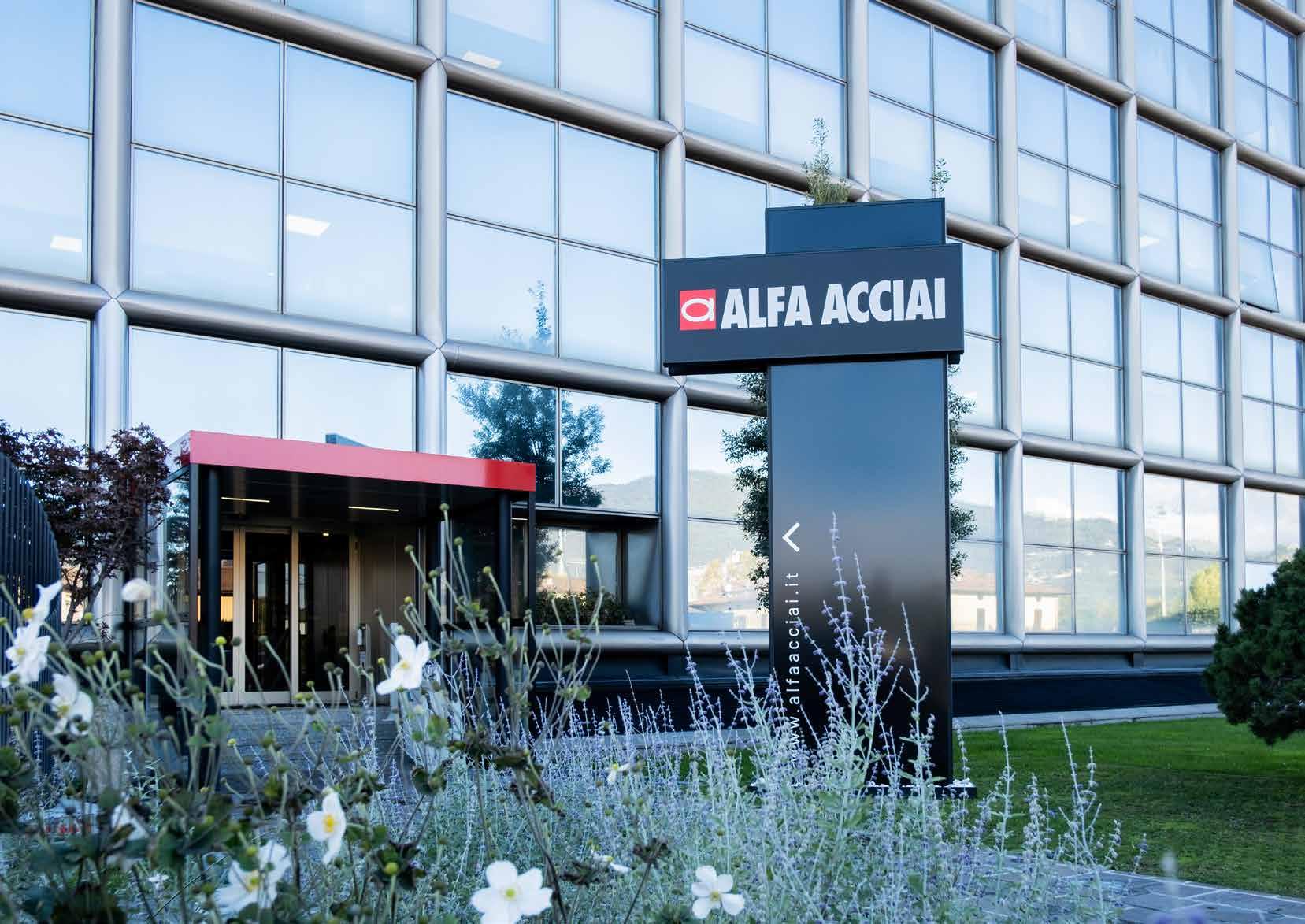
Letter to Stakeholders
Our third Sustainability Report, which you are about to read, updates the strategies and provisions implemented by the Group to improve recognised levels of quality, reliability and competitiveness, and to maximise respect for the environment and standards to protect the health and safety of the many workers employed at the Group's production facilities. However, what we mainly wish to clarify for our mindful stakeholders is the overall framework in which everything transpires and the challenges facing the Italian EAF steel industry in these times. However, these challenges are not so different or less critical than those tackled by the Group over its 70 years of existence.
The economic scenario which characterised 2022 was the basis for our starting point, with the Russia-Ukraine war and related energy shortage exacerbated by the lack of a shared European policy, the increase in the price of all materials, significant slumps in production, including in our own sector, and the feeling of uncertainty rippling through all markets.
The Italian steel industry is characterised by the widespread use of electric arc furnaces and is very intertwined with the growth of the country and progress in our business mirrors the national economy strength. Italy's economic performance in 2021 and 2022 was exceptional, as were the results reported by Italian steel companies in the last two years, making it possible to pursue ongoing investment as required by the sector. The Italian steel industry, and this includes us, has maintained business excellence over time not only thanks to investment, but also due to extraordinary flexibility and the ability to adapt to changing market conditions - an ability which is unmatched in Europe and probably throughout the world.
Our stakeholders should also remember that the Italian steel industry sets the market standard in Europe in terms of circular and sustainable production. 80% of the steel is produced in decarbonised electric mini mills, described in detail in this report. This is why, as a Group, we can define ourselves as 'protagonists of Europe's largest circular economy machine'.
For decades our daily endeavours have been aimed at keeping Italy on the world list of great industrial countries and safeguarding our national steelmaking heritage. If we consider that the steel market is global and subject to comparison with the competitiveness of other countries, Italian electric-arc steelmaking has historically had to cope with electricity costs that are higher than those of European competitors. These differences exist despite gargantuan efforts by companies in the last twenty years to save energy, the existence of fundamental conditions and temporary measures to mitigate the high energy costs implemented by Draghi's government and continued by the Meloni’s government.
Added to this is the fact that there is no European plan for hard-to-abate industries, and more specifically for our purposes, for steel production. Indeed, European decisions regarding the environment tend to charge onto our industry the huge costs of carbonisation without providing efficient tools that protect against aggressive economies participating in social and environmental dumping practices. This emphasises the asymmetries within the EU due to individual Member State policies, and generally undermines the competitiveness of the EU industrial system at its very foundations.
In particular we are referring to the planned transformation in Europe of 40-50 million tonnes of steel from the blast furnace process to the electric arc furnace process, in order to meet European environmental targets. Apart from the cost of the conversion itself, if implemented, this transformation will create disastrous imbalances in the scrap and energy markets, heavily impacting Italy as the leading European producer of steel using EAF technology.
Today the main aim is to defend our electric-arc furnace model, whereby the installation of new EAF production capability must be linked, in Italy and Europe, to guarantees in terms of supplies of direct reduced iron (DRI) and metal charge.
Also crucial for the survival and future of our business is the recruitment of skilled personnel and training for young people, where technological transformation and the gradual digitalisation of our processes require qualified people.
In this regard the Alfa Acciai Group has consolidated its company welfare plan, and in recent months has opened the Alfa Academy as a result of the collaboration with the Machina Lonati Technical College, to provide young people with year-long practical and theoretical courses on the installation and maintenance of industrial and steelmaking equipment.
Mindful of our significance in the community from an organisational, economic and employment perspective, our thanks go to all our employees who, during this year of ongoing upheaval, while operating with pragmatism and rationality, contributed to make the search for maximum efficiency and competitiveness our Group's driver, which indeed continue to progress thanks to huge investment, ongoing improvement and consistent team work. A tireless commitment to sustainability, defined as the coexistence of the company, environment and the community, resulted in exceptional economic performance in 2022 and improvements in various social and environmental indicators, in the expectation that investments, ambitious projects planned and the reorganisation of the complex reality of our Group take their course and bring even more significant results in terms of both energy transition and competitiveness at the service of our country’s growth in infrastructure.
Enjoy the read.
Ettore Lonati President

Amato Stabiumi Chief Executive Officer

Explanatory Notes Highlights
This document is the Alfa Acciai Group's third sustainability report, and it has been produced to inform all internal and external stakeholders of the Group's achievements over the last few years in relation to sustainability and to outline future targets to be pursued.
For communication purposes in this document, the Alfa Acciai Group’s reporting scope includes the parent company Alfa Acciai S.p.A. and its operating subsidiaries Alfa Derivati S.r.l., Acciaierie di Sicilia S.p.A., Tecnofil S.p.A. and Ferro Berica S.r.l. (hereinafter Ferroberica), with the exclusion of non-operating companies as they work in the real estate business.
With a view to ensuring the comparability principle, information and figures provided in this report on a voluntary basis relate to financial years 2020, 2021 and 2022 (01 January – 31 December).
The Sustainability Report was prepared in line with the GRI Standards published by the Global Reporting Initiative (GRI) in 2021. Furthermore, the fundamental principles of reporting, such as accuracy, balance, clarity, comparability, completeness, sustainability, timeliness and auditability were upheld in drawing up this document.
More specifically, the Group opted to prepare the document in accordance with the "With reference to" reporting mode provided by the GRI Guidelines, using a selected set of GRI Standards as a basis for reporting the information in this document.
For a list of the reported GRI indicators, with relevant sections and reference pages, please refer to the GRI Content Index at the end of this document.
In order to ensure data reliability and an accurate representation of performance, the use of estimates was limited as much as possible, and where this was necessary, they were calculated on the basis of the best available methods and reported in detail.
Last but not least, we would like to mention that this Sustainability Report was audited by the auditing firm PricewaterhouseCoopers S.p.A.
In line with the previous Sustainability Report, the Group has identified specific initiatives related to certain United Nations 2030 Agenda Targets and Objectives, whose achievement it contributes to.
Should you require any clarification or wish to learn more about the contents of this document, feel free to write to the following e-mail address: infobds@alfaacciai.it
GRI 2-1; GRI 2-2; GRI 2-3;
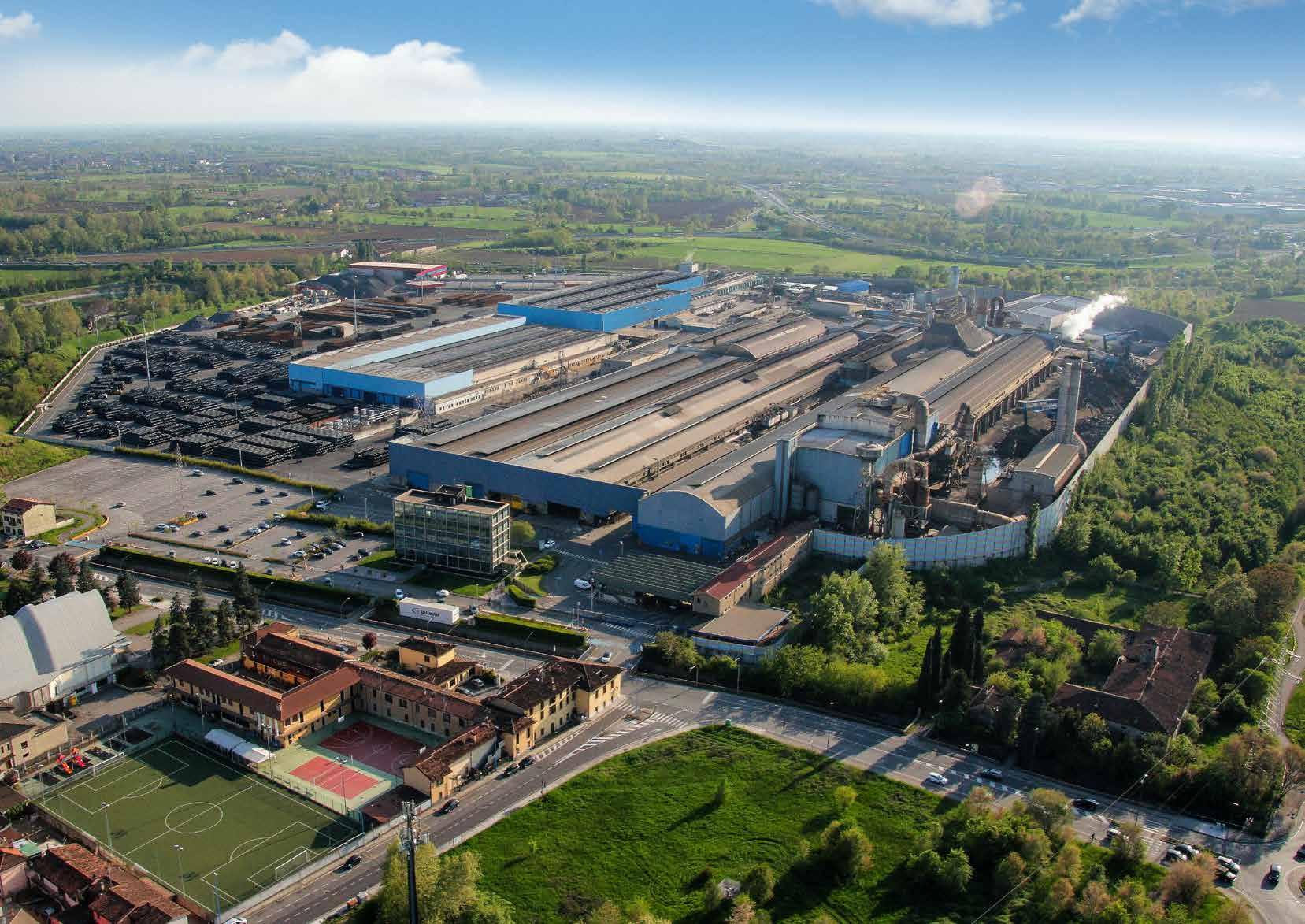
THE ALFA ACCIAI GROUP’S IDENTITY AND PROFILE 1.
The Alfa Acciai Group’s identity and profile 1.
The Alfa Acciai Group has been one of Europe’s leading manufacturers of reinforcing steel and wire rod for almost 70 years, with an overall annual production capacity of 2.5 million tonnes, and is now a benchmark in terms of cutting-edge technology and environmental awareness throughout the entire steel supply chain.
The Group, which is controlled by Siderurgica Investimenti, a holding belonging to Stabiumi and Lonati families, features high industrial flexibility and maximum operational efficiency upstream and downstream the melting process, alongside a sound financial position and assets. These characteristics enable the Group to successfully respond to ongoing changes in the domestic and foreign steel markets and the increasing awareness of citizens regarding environmental issues, by keeping the same constant focus as Alfa Acciai has reserved to its employees and customers since the outset.
SEI and SI ENERGY
Through the subsidiaries SEI and SI ENERGY, which are not included in the Sustainability reporting scope, the holding company Siderurgica Investimenti has long been committed to the development and management of energy efficiency and renewable energy projects.
1.1 Background
Acciaierie Laminatoi Fonderie Affini S.r.l.’, the original name from which the current acronym ‘ALFA’ derives, started its activity focusing entirely on steel production and rolling, through ongoing technological upgrading.
Mitigation of the environmental impact of the plant, through both the installation of stateof-the-art EAF emission filtering plant systems and also sound-proofing of the main production processes.
The Downstream Production Unit comes into being for the production of welded mesh and drawn wire.
Alfa Acciai takes over Vicenza-based Ferroberica, thus enabling the company to upgrade all its cold processes, including the pre-shaping and assembling of reinforcing steel, sectors in which it is now the largest player in Italy and second in Europe.
Alfa Acciai takes over Catania-based Acciaierie di Sicilia, in the centre of the Mediterranean Sea, for the production of rebar and spooled coils.
In agreement with the Brescia Town Council, Alfa Acciai develops the ‘Alfa 2000’ plan to further mitigate the environmental impact of the plant on the surroundings.
Inauguration in Brescia of the third rolling mill to add spooled coils in the product range.
With a view to minimising the environmental impact of its production cycle, Alfa Acciai begins production of Alfa Sinstone®, an aggregate obtained from the recovery of steel mill slag for use in civil engineering works and road construction.
Alfa Acciai takes over in Brescia the industrial site of Montirone and Tecnofil, one of the major drawing mills with galvanising plant in Europe, and soon rationalizes the wire types (galvanized, alu-zinc and bright wire).
Il sito di Montirone si appresta ad ospitare un nuovo reparto di Alfa Derivati per la produzione di ribobinato e un impianto ipertecnologico di Ferroberica, che si aggiunge a quelli di Catania e Sedeglaino (Ud)
Jointly with A2A, Italy’s largest multi-utility company, Alfa Acciai implements an innovative and efficient system for recovering thermal energy from the steel plant.
Publication of the Group’s first Sustainability Report.
Celebration of Ferroberica’s 50th anniversary with the development of a product EPD for this company downstream the melting process as well and the definition of a Group-wide Carbon Footprint at the Corporate level
1.2 Business activity and production sites
The Alfa Acciai Group comprises several well-established companies specialised in various steel-making areas in Northern and Southern Italy, a guarantee of products and services qualifying the Group as an excellent partner in terms of quality and reliability.
The Group is currently made up as follows:
Situated in an area covering more than 353,000 m2 to the south-east of Brescia since it was established in the 1950s, the headquarters of Alfa Acciai lie within residential areas that were built later, in addition to major road networks.
The largest section of the industrial facility houses the steel mill, which stretches from the scrapyard area, where scrap can be put into the shredder, to the evacuation plat-
form with billets destined for the hot rolling process. More specifically, the plant comprises two electric-arc furnaces (EAFs) and two ladle furnaces (LFs), representing the steel mill’s true core process, from which two billet production lines depart to feed two five-strand continuous casting machines, the casting operating parameters of which are controlled by a complex fully automated system.

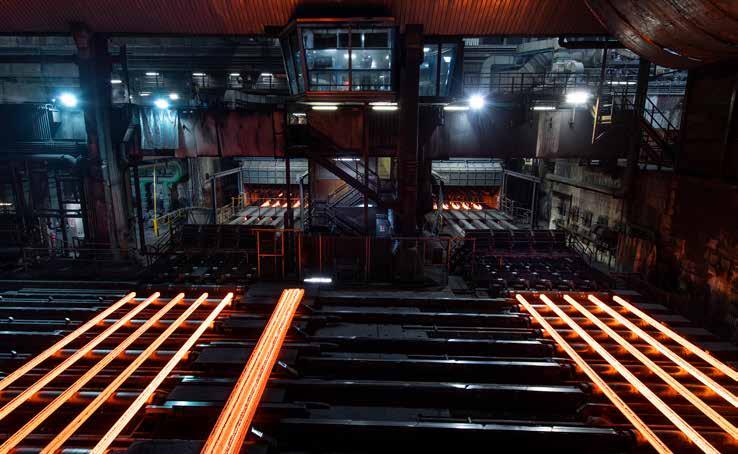
The steel mill turns out a range of square billets, which are the semi-finished products used in the three hot-rolling departments for the production of rebar and spooled coils for reinforced concrete under the ALFA ACCIAI brand, and wire rod.
The Hot Rolling Division is equipped with three independent mills with a total production capacity of up to 2 million tonnes, and the products obtained meet the requirements of the numerous certifications that the target markets demand.
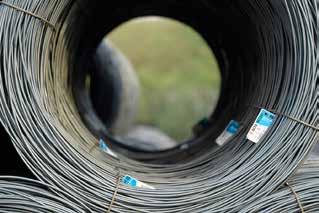
Located in the industrial district of Catania, Acciaierie di Sicilia is the only steel mill on the island and the Group's key natural point of reference for the southern Italian market and for exports to Mediterranean countries and far beyond. With a production capacity of 500,000 tonnes, the company turns out reinforcing steel in bar and coils under the ACCIAIERIE DI SICILIA brand, which is certified for various markets. These products are the result of the electro-fusion and continuous casting of Sicilian ferrous scrap and the subsequent hot-rolling which, as of this year, uses a hot-charge system installed ahead of the bar-packaging devices arranged parallel to the spooling lines, which significantly reduces CO2 emissions.
Thanks to its size, the latest technology used and premium quality products, Acciaierie di Sicilia has created a supply chain employing hundreds of people and has established reliable relationships with customers who have contributed to establish today’s Sicily.
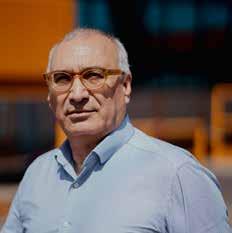
Alfa Derivati has two production sites, one within the parent’s San Polo-based industrial site and the other in Montirone (to the south of Brescia). They produce, for and under Alfa Acciai’s brand name, high-ductility welded mesh for reinforced concrete in a standard format and recoiled wire for the domestic and international markets.
The recoiling/stretching process uses latest-generation high-output production lines, which optimise the mechanical characteristics of the wire being processed, while maintaining high ductility to obtain HD-products, a characteristic common to all Alfa Acciai Group’s products for the construction industry.
In recent years, following major investments at the Montirone site, it was possible to reinstate the railway link, which contributes to increase Alfa Acciai and Alfa Derivati exports to Central Europe, thus bringing significant environmental benefits.

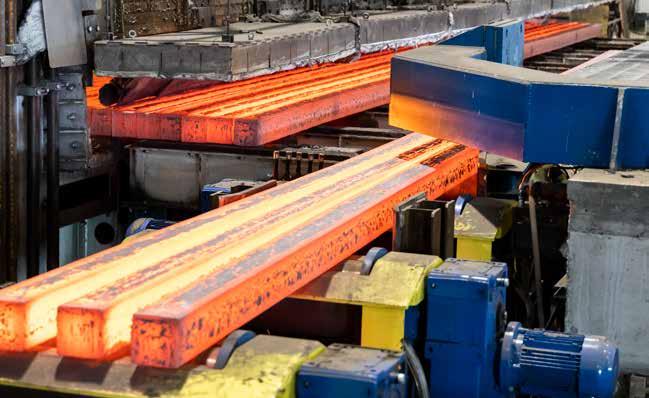
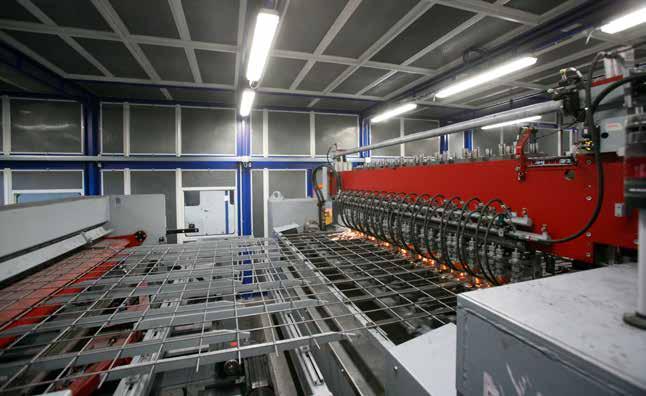
Vincenzo Guadagnuolo General Manager
Filippo Piccioni Cavagnini General Manager
With its registered headquarters and main production facility in Vicenza, Ferroberica was established 50 years ago and today is the leading operator in Italy and the second in Europe for the cutting and bending and assembling reinforcing steel for Europe's main construction companies. With the aim of increasing its market presence and providing a widespread service throughout Italy and Southern Europe, Ferroberica expanded over the years and opened additional production facilities in Catania, using bars and coils from the subsidiary Acciaierie di Sicilia, in Sedegliano (Udine) and in Montirone (Brescia), whose site represents the most technologically advanced and automated cutting and bending plant in the world.
The company has belonged to the Group for over 30 years and, thanks to its expertise, reliable supplies and market competitiveness, it is a cutting-edge production facility with latest-generation equipment and a total annual production capacity of 400,000 tonnes.
At a national level it relies on external loyal production companies located in strategic areas all over the country, close to production-industrial estates or areas planned for expansion, with the aim of delivering a service that meets construction site requirements.

In addition to its core cutting and bending operations, since its onset, Ferroberica has made available its own highly specialized technical staff who provide timely consulting service for feasibility analysis at the design stage, plus an efficient customer care service.
Ferroberica is proudly celebrating its 50th anniversary this year with its employees and updated proposals for customers, such as the introduction of dedicated project managers to handle projects, the development of the environmental product declaration (EPD) for its products, quantifying direct and indirect CO2 emissions and, last but not least, the launch of large-scale prefabricated frameworks, resulting in reduced implementation timescales for the entire project, plus enhanced quality and site safety.

Tecnofil was established in 1994 in Gottolengo (Brescia). Since its very beginning, it has developed and strengthened its core business in the production of low and medium carbon wire and in the drawing and galvanising process, and is currently the drawing mill with the largest galvanising plant in Italy.
In 2016, Tecnofil joined the Alfa Acciai Group and has now become one of the major drawing mills in Europe for the production of steel wire, galvanized wire, alu-zinc wire, bright wire, annealed wire, redrawn wire and skinpassed wire for endless applications.
The close cooperation with the Alfa Acciai steel mill and rolling mill has significantly increased its overall production capacity and product range. The installation of a new 40-wire galvanising line, allows it to turn out more than 100,000 tonnes of wire a year.
More specifically, Tecnofil is equipped with dry-drawing plants, some of which developed and designed in house, and two immersion galvanizing systems, while the area dedicated to wire production and processing covers a surface area of 30,000 square metres.
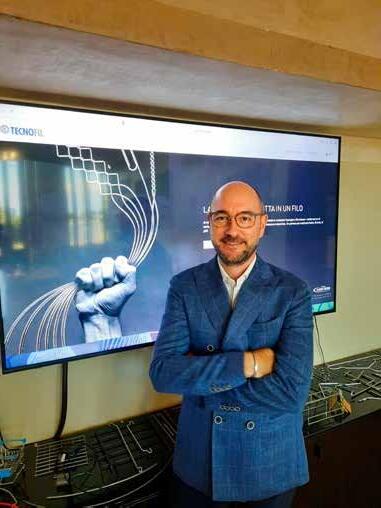
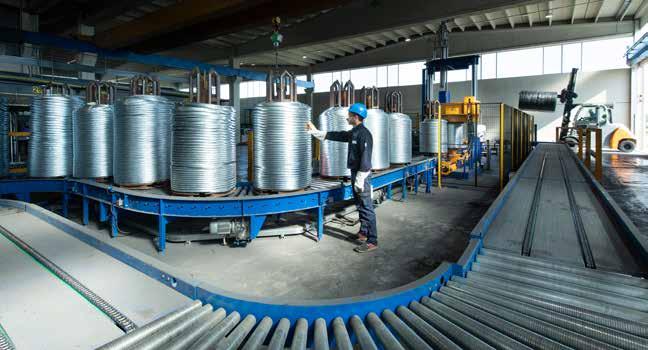
Giorgio Binelle Chief Executive Officer
Andrea Biasi Technical-Sales Manager
Gianluca Periccioli Chief Executive Officer
1.3 Markets served
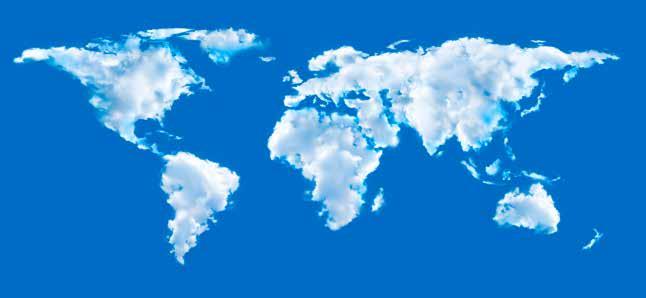
As the result of the coordination and synergies created, the Alfa Acciai Group has strengthened its presence abroad and enlarged its product range: in addition to the construction industry, where it plays a leading role, it has made decisive moves into the world of bright wire, the automotive and household appliance industries, mechanical engineering and wire rod for a variety of applications.
Our well-established and highly qualified sales network enables us to serve the whole of Europe, North Africa, Northern, Central and South America.
The main products marketed by Alfa Acciai and Acciaierie di Sicilia are: reinforcing steel (rebar, spooled coils, recoiled wire, welded mesh) wire rod and billets. Being a highly regulated industry, our products are subject to stringent product quality controls and well-defined statistical process controls to ensure the required specifications. More specifically, there is a need to obtain and maintain product qualifications with the various national bodies that carry out regular quarterly, half-yearly or annual audits (depending on the country) in order to be able to market and use reinforcing steel. During these audits, checks are carried out on both the product and the quality management system.
In terms of product target markets, the wire rod customers are usually the wire drawing mills that use the product to produce wire or strip for a variety of typical applications in the automotive and white goods industries,
mechanical engineering, construction, welded mesh for civil and military use, the manufacturing industry in general, agriculture and off-shore energy transmission cable reinforcement. Instead, customers for reinforcing steel are typically cutting and bending centres, distributors of building products and international dealers, as well as construction companies and precasters.
With specific reference to Tecnofil, the company serves a variety of sectors as it produces low-to-medium carbon galvanised, zinc-aluminium and bright wire for applications such as building construction, agriculture, white goods and household appliances, automotive, enclosure security and fencing systems and many more everyday applications.
Last but not least comes Ferroberica, a leading company in Italy and second in Europe for cutting and bending and assembling reinforcing steel for leading construction companies in Italy and neighbouring countries, for use in all structural road, railway and maritime works and in public, industrial and residential buildings.
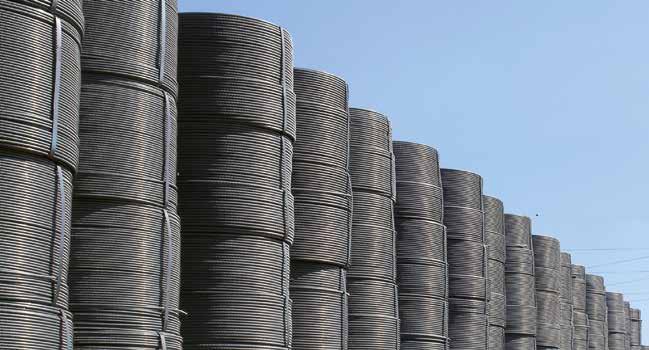
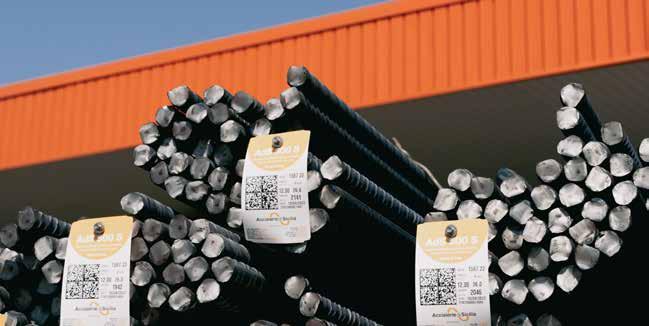












Associations we are members of
With the aim of establishing an ‘integrated system’ with the community as a whole and in the pursuit of long-term strategies for decarbonisation, Alfa Acciai has signed the Patto per Brescia 2050, which represents a vision of the future promoted by Brescian entrepreneurs, of a low-carbon society, a green and circular economy and resilient ecosystems as the basis for citizens’ well-being.
Alfa Acciai and Acciaierie di Sicilia are members of Federacciai, the national association representing the main Italian steel manufacturers, through which they are also members of Eurofer – the European steel association. Together with Ferroberica, they are also members the local branches of Confindustria, the General Confederation of Italian Industry.
In addition, Alfa Acciai subscribes to the following organ-
isations operating at a local, national and international level.
GREEN METALS BRESCIA CONSORTIUM
Since its onset in 2022, Alfa Acciai has joined the Green Metals consortium, in which local metallurgical companies, such as steel mills, foundries and aluminium producers team up forces to promote biomethane projects in order to minimize the consumption of natural gas currently used in production processes.
By investing in the local biogas production chain linked to agricultural and livestock production, this consortium tends to capitalise on important local natural resources to put them at the service of its renowned industrial district with a view to increasing decarbonisation.
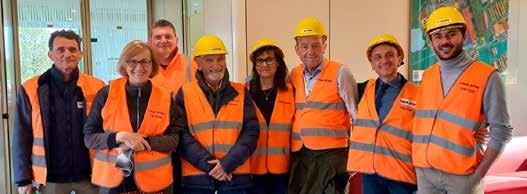
RAMET
Ramet is a consortium that brings together 22 Brescia-based metalworking companies in a joint project to study and monitor the impact of their production activities on the workplace and the surrounding environment, by involving them in roadmaps aimed at safeguarding the environment.
ALFA ACCIAI OBSERVATORY
In operation since 2007, the Observatory is a forum set up under the auspices of the Brescia Town Council and comprises the Councillor for the Environment, supra-communal Green areas and Parks, who acts as Chairman; the Head of the Environmental Sustainability Sector; the Chairman of the Council Commission for Ecology, Environment and Public Protection; the Minority Town Councillor; the representative of the Council for the Environment of the Municipality, Alfa Acciai’s Representative; Alfa Acciai Employee’s Union Representative; a Representative of San Polo Case Administrative District Council and a Representative of San Polo Parco Administrative District.
The Observatory periodically assesses the impact of the steel mill on the environment, with particular reference to:
• state of progress of works underway;
• assessment of the main problems perceived by local residents and possible solutions;
• Assessment of the environmental monitoring data.
CO.DI.S.A.
Since 2011 Alfa Acciai has collaborated with a group of local residents, called CO.DI.SA, a health and environmental committee. Periodic meetings are held to inform the local residents and share with them improvement projects for the environment and production that the company has put in place or intends to develop.
UNISIDER
The Italian steel standards unification body, at the technical committees of which Alfa Acciai participates in the preparation and modification of standards for the steelmaking industry. UNISIDER represents Italy at standards organisations in Europe (CEN) and worldwide (ISO) in the areas of expertise, including the steel industry (steel and cast iron).
AIM – Italian Association of Metallurgy.
In 2023 Alfa Acciai hosted the travelling class on the ‘Melting Machine’.
FINCO – the Italian Federation of Industries for Products, Systems, Services for Construction and Maintenance.
ESTEP – European Steel Technology Platform.
– A trade association of inert waste recyclers in Italy and Europe.
REACH FERROUS SLAG CONSORTIUM
GLOBAL STEEL CLIMATE COUNCIL – The Global Steel Climate Council is an international coalition of steel producers committed to limiting the increase in average global temperature to within 1.5°C by the year 2050, and establishing a global standard for measuring and reporting carbon emissions from steel production that leads toward a sustainable future.
The main GSCC principles are as follows:
• Reduce emissions of greenhouse gases from the steel industry;
• Establish a reporting standard irrespective of the production technology, which has a span that includes Scope 1, 2 and 3 emissions.
• Establish a standard in line with a carbon footprint reduction pathway that leads to limiting the average global temperature rise to 1.5°C by 2050.
• Provide decision makers with information relating to sustainable steel production.

With specific reference to Ferroberica, this company is a member of ANCE, the National Association of Building Constructors, and regularly attends workshops held by the “Major Infrastructure Committee” to discuss regulatory developments and any ongoing rapid changes of the construction industry. Since January 2022, it has joined ANSAG, the National Association of Shapers for Reinforced Concrete, and is a member of the steering committee.
ADETS - The French association for the development of welded wire mesh.
ANPAR
Institutional visit of the Brescia Town Hall Councillor for the Environment and representatives of district councils
1.5 Our stakeholders
GRI 2-29;
In carrying out its business activities, the Alfa Acciai Group enters into relations with a number of stakeholders. According to GRI Standards1 a stakeholder is an “entity or individual that can reasonably be expected to be significantly affected by the organisation's activities, products and services, or whose actions can reasonably be expected to affect the organisation's ability to successfully implement its strategies and achieve its objectives.”
In order to prepare a Sustainability Report in line with GRI principles the Alfa Acciai Group has mapped its internal and external stakeholders in order to identify the most relevant ones. The categories identified are listed below:
Internal stakeholders External stakeholders
CUSTOMERS
SUPPLIERS OF GOODS AND SERVICES
OWNERSHIP
EMPLOYEES AND COLLABORATORS
TRADE UNION REPRESENTATIVES
AGENTS
Stakeholder
LOCAL COMMUNITIES
TRADE ASSOCIATIONS
INSTITUTIONS
PROVIDERS OF CAPITAL
INSURANCE ENTITIES
RESEARCH AND INNOVATION ORGANISATIONS
CONTROL AND CERTIFICATION BODIES
REGULATORS
COMPETITORS
The Alfa Acciai Group has continued to develop relations with its stakeholders through different channels, which are diversified and tailored to each category of stakeholders: ranging from the more traditional ones, such as telephone calls and questionnaires, business meetings, formal briefings, technical conferences, external visits, notice boards, press releases and the well-established Alfa Acciai Observatory right through virtual ones, such as video conferences and the Group's websites, where you can find useful information. Interaction on the Group’s various social channels have continued over the years. More specifically, in 2020, the Group started to use Telegram with employees as a means of communicating ongoing pandemic rules in real time. Then, since the end of 2021, namely since the publication of the first Sustainability Report, the Group has been using a structured digital narrative on LinkedIn, which enhances the specificities of the individual group companies, while emphasizing the common core, thereby reaching out to a broader audience of stakeholders than in the past.
1.6 Materiality analysis and main impacts
GRI 3-1; GRI 3-2; GRI 2-25
The Group adopted the approach of the selected reporting standards, i.e. the GRI Standards, and conducted a materiality analysis to identify the issues to be reported in the Sustainability Report.
More specifically, the Alfa Acciai Group has implemented a process to identify “material topics”, which are defined by the GRI Standards as “topics reflecting the impact of the organisation on the economy, the environment and people, including impact on human rights”
Identifying these material topics has required the Group to carry out various activities, including:

MAPPING THE RELEVANT STAKEHOLDERS

ANALYSING THE INTERNAL CONTEXT AND PERFORMING DOCUMENTATION DESK ANALYSIS e.g., the Code of Ethics and the Quality, Environment and Safety Policy)

ANALYSING THE EXTERNAL CONTEXT IN WHICH ALFA ACCIAI GROUP COMPANIES OPERATE
Thanks to the aforementioned activities, the Alfa Acciai Group has defined a set of impacts in terms of sustainability that are relevant to the group's business and stakeholders. These have made it possible to identify material topics for the Group in line with the update to the methods stipulated by the 2021 GRI Standards. In detail, the 4-step analysis involved understanding the context surrounding the organisation, identification, evaluation and prioritisation of active and potential impacts of most significance to the company. These were then grouped to identify the company's material topics.
This analysis led to the identification of a list of positive and negative potential and/or current impacts that the companies in the Alfa Acciai Group could generate in the course of their operations. Following this analysis, the list of material topics identified in the Group's prior sustainability reports was validated, and the relevant table is shown below on the basis of the GRI 2021 reporting standard requirements.

IDENTIFYING POTENTIAL AND ACTUAL IMPACTS

SSESSING THE RELEVANCE OF IMPACTS APPLICABLE TO ALFA ACCIAI GROUP’S OPERATIONS

PRIORITISING IMPACT AND GROUPING INTO MATERIAL TOPICS

1) The ‘Global Reporting Initiative Sustainability Reporting Standards’ (GRI Standards) are the reporting standard chosen by the Alfa Acciai Group for the preparation of its sustainability report. These standards were defined in 2021 by the GRI –Global Reporting Initiative.
Pollutant emissions management and decarbonisation
Positive economic performance represents an opportunity for the Alfa Acciai group. In carrying out its operations, the Group generates and distributes value through initiatives and practices that make the Group successful in the market, obtains sustainable lasting results, and contributes to the creation of wealth and the economic growth of the community in which it operates.
The digital transition represents an opportunity for the Alfa Acciai group. By investing in the digitalisation of its business and production processes, the group can develop solutions for increasing its overall efficiency and reducing potential environmental impact. This action is managed continually by the entire Group and the IT department in particular.
Improving corporate reputation is an opportunity for the Alfa Acciai Group, which is clearly committed to pursuing high standards to create value for society and its stakeholders.
Any non-compliance with legislation and regulations represents a risk for the Alfa Acciai Group. For this reason, company departments manage continuous monitoring and improvements to ensure that the companies in the Alfa Acciai Group are complying with legislation and regulations when carrying out their operations, in order to prevent this risk from occurring.
Potentially negative
The potential loss of sensitive data represents a risk for the Alfa Acciai Group, for example due to cyber-attacks by hackers, with potentially negative repercussions on operations and the company's reputation. The IT department continually manages and invests in this regard. Potentially negative
The Alfa Acciai Group's contribution to circularity is reflected in its use of scrap iron as a main raw material for its products (company products are 99% recycled content). Along with this, is another opportunity in the form of production waste, as the Group develops circular economy plans and initiatives to minimise its environmental impact. The Environment department continually monitors and improves this activity.
The Alfa Acciai group minimises its use of drawn or diverted water by carefully managing the water resources required for production processes, maximising internal recirculation and the reuse of rainwater where possible. The Maintenance department continually monitors and improves this activity, which is overseen by the Environment department.
Electricity and fuel represent the main energy sources used by the Group for its production processes. The Group has an Energy Management department that continually monitors the use of these resources, in order to increase energy efficiency, evaluate investment in process efficiency optimisation, and manage and mitigate any changes relating to energy supplies.
Emissions into the atmosphere represent a risk related to the Alfa Acciai group's operations. Monitoring pollutant emissions and greenhouse gases linked to energy consumption enable the Group to set up a system to assess and manage its carbon footprint and emissions, in order to minimise negative effects on people and the environment. The Environment department continually monitors and manages this activity.
negative


Employment, employee health and wellbeing
The presence of qualified, skilled personnel represents an opportunity for the Alfa Acciai Group, both in terms of professional development and achieving corporate objectives. Through initiatives and investment, the Group provides its employees with training courses to develop a workforce that is competent and up-to-date. The HR department manages this aspect.
Through its safety and prevention measures the Alfa Acciai Group works to prevent, remove and mitigate potential safety risks. The Group continually focuses on prevention measures, monitoring and training in relation to safety. Potentially negative
Safety in the workplace
Developing a culture of health and safety in the workplace represents an opportunity for the Alfa Acciai Group. The Group supports its employees in managing operations safely, through initiatives to inform and raise awareness carried out directly or by specialist companies. This activity is overseen by the Group's company health and safety managers.
Ongoing stakeholder involvement represents an opportunity for the Alfa Acciai Group. Through various methods of involvement, the Group organises stakeholder engagement mechanisms to get their feedback and inform them about the Group’s efforts in its sustainability approach.







Focus on local communities
Contributing to socio-economic development in host communities represents an opportunity for the Alfa Acciai Group. The creation of employment and the selection of suppliers generate economic benefits for local communities.
Actual positive

Responsible supply chain management
By combining social and environmental criteria when selecting suppliers, the Alfa Acciai Group can contribute to creating a sustainable supply chain and generating a positive impact on society. Potentially


Product quality and customer satisfaction
Actively monitoring product quality and customer satisfaction based on scientific method with KPI metrics represents an opportunity for the Alfa Acciai group to implement and achieve Continuous monitoring Improvement.
Circular economy
1.7 Support to the 2030 Agenda
In line with Alfa Acciai Group’s ongoing commitment to sustainability, the Sustainable Development Goals of the UN 2030 Agenda and corresponding targets have been analysed and identified, jointly with the corresponding targets to which the Group can contribute through initiatives that will be reported in the material topics. As part of the Global Compact, in 2015 the United Nations
approved a global agenda for sustainable development. All this has a certain level of urgency given the gradual deterioration in the environmental conditions of our planet, and encourages not only companies, but all economic and social players, countries included, to commit to achieving the 17 goals set out by 2030 (Sustainable Development Goals – SDGs.
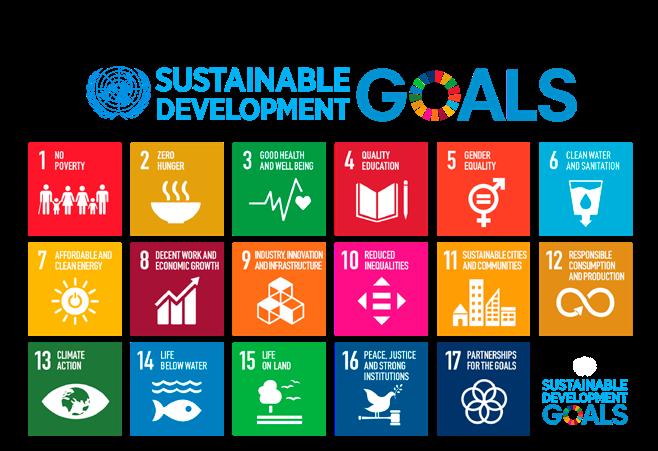
In particular, Alfa Acciai is focusing on 7 out of the 17 SDGs and on 10 Targets in the 2030 Agenda, strictly related to the material topics identified, as shown in the table below.
Alfa Acciai Group material topics/SDG







Business integrity
Economic performance
Circular economy
Energy efficiency
Pollutant emissions management and decarbonization
Employment, health and well-being of workers
Occupational safety
Care for local communities
Sustainable supply chain management
Product quality and customer satisfaction

2.
RESPONSIBLE AND TRANSPARENT GOVERNANCE
Responsible and transparent governance

2.1 The governance framework
The parent company Alfa Acciai S.p.A. has adopted a so-called “traditional” governance framework, with the following corporate bodies as envisaged in the Articles of Association:
• Shareholders’ Meeting: with exclusively deliberative functions, whose decisions are limited by law to the most important decisions of corporate life, with the exclusion of managerial powers;
• Board of Directors: comprising three to thirteen members, vested with the broadest powers for the ordinary and extraordinary management of the company, with the power to perform all actions deemed necessary or appropriate for the achievement of the corporate purposes;
• Board of Auditors: comprising three statutory members, with supervisory functions over the company's administration in accordance with the provisions of Article 2403 of the Civil Code.
The shareholders' meeting has appointed KPMG S.p.A., a company of recognized high standing, to perform the statutory audit pursuant to Legislative Decree 39/2010.
Alfa Acciai S.p.A.’s Board of Directors has delegated part of its powers to three Managing Directors, assigning each of them the following powers:
• Chairman and
• Deputy-Chairman, they both legally represent the company and are vested with the powers necessary for ordinary administration
• A Director with delegated powers, who legally represents the company on occupational health and safety and environmental issues.
IIn order to monitor and safeguard sustainability issues, Alfa Acciai has therefore decided to assign specific powers and responsibilities to one of the directors, who is flanked by the Directors / Employers of Alfa Acciai’s Production Units and other professionals with special skills in managing and monitoring specific aspects.

ALFA ACCIAI S.p.A. CORPORATE POSITIONS
Board of Directors
Directors
Francesco Lonati
Marco Lonati
Gianluigi Piccioli
Giacomo Polotti
Clara Stabiumi
Margherita Stabiumi
Chairman Ettore Lonati
Deputy-Chairman
Chief Executive Officer (CEO) Amato Stabiumi
Directors with Delegated Powers for OHS&E
Giacomo Disarò
Board of Statutory Auditors
Chairman
Giovanni Consoli
Statutory auditor
Mariano Casella
Statutory auditor
Antonio Minervini
The Subsidiaries are independent entities in terms of assets, organisation and management. Each of them has a Board of Directors with one or more Directors vested with specific delegated powers. It is worth noting that Alfa Acciai S.p.A. provides its subsidiaries with service activities under the terms of specific contracts.
Throughout the years, Alfa Acciai has successfully redesigned its business model by anticipating the national and international macro-trends that have characterised the world of steel production. As clear evidence of Alfa Acciai’s ability to innovate itself, after the 2008 financial and construction crisis, the company implemented a new organisational model based on Production Units that helped focusing on the set objectives, both in quantitative and especially qualitative terms. Staff functions have also been affected by this new organisational structure, having to adapt to a new model.
GRI 2-9;
Giacomo Disarò COO and Director with delegated powers
Alfa Acciai’s current organisational structure is as follows:
▶ Steel Mill Production Unit, dealing with the manufacture of steel;
▶ Rolling Mill Production Unit, dealing with the manufacture of wire rod, hot-rolled rebars and coils;
▶ Central Services Production Unit, comprising the following company functions: Quality, Production Planning, Logistics, Information Technologies, Scrap Purchasing, Environmental Service, Process Energy Dynamics, Projects & Investment office, Integrated Management System;
▶ Sales Department;
▶ Purchasing Department;
▶ Administration, Finance and Control Department;
▶ Human Resources Department.
Each production unit has a manager, who also covers the role of employer.
The Production Units are coordinated by a Chief Operating Officer (COO) who interfaces with the various departments and is responsible for directing and super-
vising industrial operations as well as organising the sustainable development of production activity.
Following the pandemic crisis, the Parent Company set up a Safety Commission for each production unit, comprising a Production Unit Manager, an OHS representative, the HR Manager, the Workers’ Safety representative and a Trade Union representative, the aim being to maintain a constructive and conflict-free approach for identifying the best possible solutions regarding safety, that can be implemented with the involvement, and in the interest, of everyone.
The task of the Commissions is to carry out a detailed analysis of situations in terms of safety that are worthy of attention, gathering observations and suggestions on the subject, and preparing action plans with implementation timescales and progress checks. Commissions must also regularly update action plans, defining timescales and the people responsible for each action.
2.2 Our guiding values
The Alfa Acciai Group is fully aware that a responsible and sustainable economic strategy is essential for achieving long-term business success. As a result, the Group has established and nurtures excellent relationships with people and the communities in which its premises are situated, and is committed to always conducting business operations in line with the following values:
COOPERATIVE APPROACH
The Group aims to maintain and develop a relationship of trust with its stakeholders whose input is necessary for achieving company objectives, or who have an interest in their achievement
PROPRIETY
Situations in which parties involved in business transactions have or appear to have a conflict of interests must always be avoided when undertaking any activity.
FAIRNESS
The Group does not discriminate on the basis of age, gender, sexual orientation, health, race, nationality, personal opinion or faith in decisions that affect stakeholders.
INTEGRITY
The Group uses organisational tools designed to prevent employees and collaborators from breaching principles of integrity, transparency and lawfulness and monitors compliance thereof.
In order to pursue the aforementioned values, the Group companies have expressed a desire to combine sound economic management with respect for people and the environment, by each adopting a Code of Ethics. This document is available on various Group websites (www.alfaacciai.it, www.tecnofil.net, www.ferroberica.it) in Italian and English, and is referred to in documentation directed at business partners. It is also attached to the main contracts agreed by the Group companies and is applicable in all locations in which they operate.
Each Group company has its own Organisation, Management and Governance model as per Legislative Decree 231/2001, the Code of Ethics is an integral part thereof, and through which they promote and disseminate
their business and corporate ethics. Likewise, all Group companies have appointed a Supervisory Body, which is responsible for overseeing the effective implementation of the Governance Model and reports to the Board of Directors on the activity performed. The Supervisory Body is made up of qualified members who guarantee consistent action, autonomy and independence with respect to top management.
Training on the Code of Ethics plays a key role in disseminating the guiding values and rules of conduct within the Group companies, provided in conjunction with direct training to the recipients of the Organisation and Management Model pursuant to Legislative Decree 231/01. GRI
2.3 Legal and disciplinary action
In 2001 Alfa Acciai and other Italian steel manufacturers were involved in a dispute with the European Commission regarding anti-trust legislation, resulting in 3 decisions being reached over the course of almost two decades, the first two of which were annulled by the relevant courts.
More recently, in 2019, Alfa Acciai challenged the Commission's third decision before the Court of the European Union. The Commission submitted its own defence, and Alfa Acciai responded to this in January 2020. On 9 November 2022, the Court rejected Alfa Acciai’s appeal as well as that of all the other companies involved. This decision was subsequently challenged by Alfa Acciai before the European Court of Justice whose ruling is expected in 2025.
Overall, at the end of 2022, Alfa Acciai still had pending one legal action related to alleged antitrust violations.
To support the focus given to this matter, Alfa Acciai adopted an Antitrust Code targeted at all of the Group companies, their managers, staff and collaborators. This code aims to clarify the principles and regulations stipulated to protect competition and develop a corporate culture to this effect, thereby preventing the risk of potential conduct that does not comply with anti-trust regulations.
It should also be noted that the Group companies have not been registered in any episodes of corruption, nor have they incurred in administrative or judicial sanctions relating to non-compliance with environmental, social and economic legislation and regulations.

2.4 Economic value generated and distributed
Overall, the economic and financial information in this Sustainability Report relates to the performance of Alfa Acciai S.p.A. and its operating subsidiaries: Acciaierie di Sicilia S.p.A., Alfa Derivati Srl, Ferro Berica S.r.l. and Tecnofil S.p.A.2 . More specifically, in addition to Alfa Acciai S.p.A., the following companies are included within the scope of consolidation:
The following table shows the Group’s economic-financial figures for 2020-2022 in accordance with GRI 201-1.
However, in a year in which the country eventually overcame the enormous difficulties arising from the Covid-19 and with it the related economic restrictions, we were confronted with the invasion of Ukraine by Russia, with the start of a war conflict that is still ongoing.
As is well known, this situation led to considerable difficulties in the supply of raw materials and energy sources, with a significant impact on volumes and prices, thus triggering a sharp rise in the inflation rate worldwide.
As a result of the consequent action by central banks to raise interest rates in an attempt to counteract inflationary pressure, there was a significant reduction in volumes
in many sectors, including construction, which is the Group's main target market.
This led to a drop in sales of more than 15% compared to the previous year, which was offset, however, by a strong growth in turnover with increased selling prices following the above-mentioned rise in raw material, energy and gas costs. This led to an increase in the economic value generated by more than EUR 440 million compared to 2021, to EUR 1,736 million (+34%). This result allowed the Group to accelerate its investment programme dedicated to plant upgrades, energy efficiency, the environment and safety.
2) Given their peculiarities as real estate businesses, the non-operating
GRI 205-3; GRI 206-1; GRI 2-27
2.5 Investment plan
The Group's investment plan to increase safety standards, quality and environmental performance and ensure more production efficiency and flexibility over the entire product range, by introducing cutting-edge solutions, also continued in 2022.
Actions involved all companies in the Group and all production departments because, based on strategic choices consolidated over the years, every company asset is systematically monitored and undergoes regular maintenance to ensure optimal functionality.
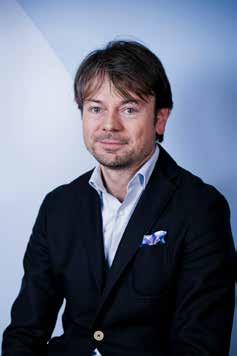
The main investments linked to the Environment and Safety concern anti-earthquake and fire prevention adaptive measures.
Note the following with regard to actions for the Upgrade and Efficiency Improvement of systems to reinforce competitiveness in various markets:
▶ Alfa Acciai: modifications to the Furnace 2 off-gas system in the steel mill for connection to the district heating system. Wire rod mill revamped with the rolling stands in the intermediate section replaced and upgraded, plus
Acciaierie di Sicilia: installation of a fast billet evacuation system and implementation of a direct hot charge system, installation of a second
of the rolling mill and a
the substation. The investments that have had an impact in reducing emissions (direct and indirect) represent 15% of the total for an overall amount for both companies of 5.5 M€.
Investments with an impact on Reducing Emissions
2.6 Information Technology Governance
In recent years, IT Governance in the Alfa Acciai Group has changed considerably, with increased focus on policies and processes designed to ensure the effective management of the various services in line with company requirements. To this effect, not only is Information Technology part of company processes, it now constitutes a necessity that contributes to outlining investments and objectives in the pursuit of the company's mission.
The group has recently intensified actions to reinforce IT security standards, placing considerable focus on protecting endpoints during access from mobile devices.
To this end, during 2022, the Group introduced the dual authentication factor for all incoming connections to the enterprise network and for all SaaS cloud services, the aim being to increase security and protect user identity. At the same time, an Immutable Storage was also introduced and implemented in the existing backup procedure, to
protect company information and data from potential ransomware attacks.
The new device guarantees immutable backup, which means data saved cannot be altered, deleted or changed in any way.
The Digital Transformation process is also progressing, with the aim of integrating existing IT systems and improving the sharing of information that is increasingly managed, processed and analysed automatically by the business intelligence systems implemented in previous years.
Also implemented in the production IT system was automatic, real-time KPI measurements of the availability, efficiency and quality of production processes, in order to increase company efficiency in achieving set objectives via the development of what is known as the SmeUp project.
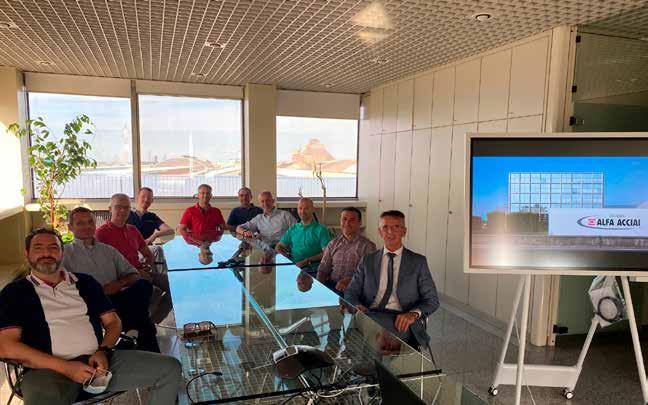
2.7 The Group’s tax approach
Being well aware of the importance of tax revenues in contributing to the economic and social development of the country, the Group has always pursued tax management with extreme integrity, by establishing relations of loyal cooperation and transparency with the tax authorities, in no way adopting conduct that could hinder their auditing and inspection activities.
Tax objectives in the Group can be summarised as a commitment to meeting tax obligations in a timely manner, ensuring taxation in the Group is correct, and overseeing and mitigating tax risk.
Furthermore, to achieve these objectives, the Group contributes to economic development by fulfilling various tax requirements, such as:
▶ income tax, as a direct tax on corporate profit;
▶ property tax, collected on selling or leasing property;
▶ employment tax, which includes tax collected and paid to the tax authorities in relation to employees;
▶ indirect tax, such as VAT, customs duties and levies etc.
Tax compliance is ensured not only by Group personnel, but also by partnerships with major tax advisory firms that support companies in meeting tax obligations and understanding new legislation introduced in the tax system.
Finally, it should be noted that all Group companies are resident in Italy and fulfil their tax obligations in our Country4
2.8 Sustainable Development Goals by 2030
8 - Decent work and economic growth Target 8.2

▶ Achieve higher levels of productivity of economies through diversification, technological upgrading and innovation, including through a focus on high value added and labour-intensive sectors.
▶ In 2022, the Group continued its investment plan aimed at increasing safety standards, environmental and quality performance, as well as ensuring high production flexibility and efficiency throughout the product range by introducing the most technologically advanced solutions
Giambattista Gigola IT Manager and his team
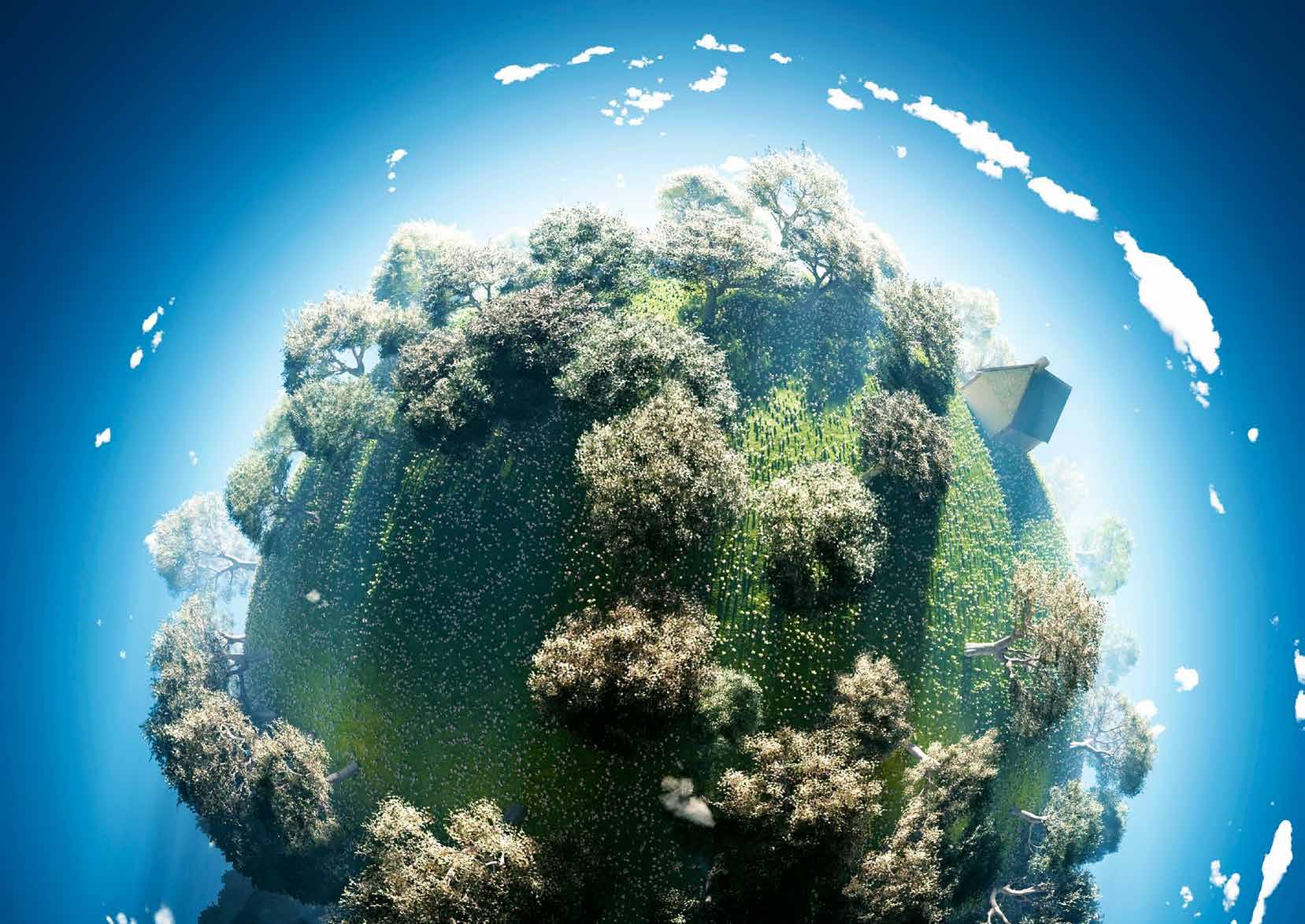
ENVIRONMENTAL RESPONSIBILITY FROM CIRCULARITY TO DECARBONISATION
Environmental responsibility, from circularity to decarbonisation






Decarbonisation undoubtedly represents the greatest challenge the steel industry is currently facing. The main aim is to implement energy transition processes that progress towards achieving more efficient, low-impact models.

Environmental sustainability in the steel industry is a competitive factor that is acquiring greater importance, due to the increasing focus of European and international legislation and stakeholder expectations. Consequently, organisations that are transparent in communicating their methods for redefining their production processes to tackle the issues raised by climate change are rewarded.
Within this framework, the Alfa Acciai Group monitors the energy consumption and enviro mental impacts of its production facilities, the most significant of which are generated by Alfa Acciai and Acciaierie di Sicilia, given the type of process and high output.
Therefore, being aware of the environmental impact of its business activities, the Group is committed to making steel production increasingly sustainable through full compliance with current environmental regulations and continually seeking the best technical, management and organisational solutions to make consumption more efficient.
In 2022, the process to quantify the Group's carbon footprint in accordance with ISO 14064-1 (CFOCarbon Footprint of Organisation) started within the reporting scope of the Sustainability Report, which represents a further step in the area of carbon management. An in-depth box is dedicated to the CFO in the following.
Goals & Targets
CARBON FOOTPRINT AT THE CORPORATE LEVEL - ISO 14064-1
In 2023 the Group obtained certification regarding its corporate carbon footprint. The procedure started by developing a corporate GHG inventory, which consists of identifying and quantifying all the direct and indirect emissions deemed significant, in our case those namely those resulting from imported electricity, transport, products and services used by the organisation, the use of products that the organisation produces or sells and any other sources. This inventory phase was analysed according to criteria of significance that made it possible to identify and evaluate which GHG emissions to include in the study.
Following the inventory phase, the data linked to all input/output flows resulting from the previously defined reporting scope was collected. Once the significant emission categories were identified, the data collected was entered into specific software that produced the results in tonnes of CO2 equivalent. Analysing the results from the certification report (inventory report) has enabled the Group to define an action plant to improve/ mitigate its GHG emissions with specific activities.
The study and corresponding certification constitute the starting point for defining a mitigation strategy for GHG emissions that directly or indirectly contribute overall to global warming, thereby demonstrating the Group's commitment with respect to international climate agreements that systematically see the world's countries engage to reduce greenhouse gas emissions.

In addition to the CFO, the Group's commitment is also testified by a series of initiatives implemented by the Group, including the application of the precautionary approach, introduced by the United Nations (UN) in Principle 15 of the 'Rio Declaration on Environment and Development', in order to protect the environment as a whole, be it the land surrounding the production sites, or the atmosphere surrounding the entire planet Earth.
All Group companies, through an integrated approach involving all environmental matrices (air, water, soil, noise, etc.), apply the Best Available Techniques (BAT5), i.e. the most technically advanced solutions that can be economically adopted within their industrial sector, pushing processes towards ever higher levels of efficiency.
For the management of environmental issues, each
Group company is organised according to specific systems with delegated powers and has appropriate organisational functions to monitor environmental risk. More specifically, the commitment to managing environmental topics and safeguarding natural resources has led Alfa Acciai, Acciaierie di Sicilia and Tecnofil to implement an Environmental Management System certified to ISO 14001.
The Group companies therefore have implemented a set of policies, procedures, tools, measures and improvement plans for managing and monitoring their environmental performance at the best, including water and energy consumption, emissions and waste. Further internal frequent audits are scheduled to make sure that the current management system as a whole is aligned with the set objectives and the path pursued is really contributing to their achievement.
5) The BAT is the cornerstone of policies for the prevention and control of environmental impacts from industrial sources. Introduced in 1996 with the first IPPC (Integrated Pollution Prevention and Control) directive in the steel industry, it was last renewed in 2012 within the Iron & Steel BREF (BAT reference documents).
Matteo Fenotti Environment Manager at Alfa Acciai
An important result for the Group's steelmaking companies was obtaining the EPD (Environmental Product Declaration) for hot rolled reinforcing steel for concrete in bars and coils and, for Alfa Acciai, for hot rolled product in wire rod , for cold rolled products and welded wire mesh, as well as the industrial aggregate known as Sinstone®. On top of these, there is also the EPD for Ferro Berica, which was obtained in 2023 and relates to the shaping, cutting and welding of steel for reinforcing concrete.
The EPD is based on the application of the Life Cycle Assessment (LCA regulated by ISO 14040 and ISO 14044), which quantifies the environmental performance of products at the various stages of their lifetime. Thanks to this certification it is possible to calculate the environmental impact of products, identify focus areas for reducing this impact, define strategies, and monitor progress and improvements in performance.
Another step the Group has taken towards sustainabil-
ity is the fact that Alfa Acciai and Acciaierie di Sicilia are among some of the first companies to obtain the European SustSteel Certification for sustainable steel established by Eurofer. This certification was designed to develop, manage and promote the concept of sustainable development based on a complex combination of economic, social and environmental issues for products used in the steel construction industry.
Last but not least, Alfa Acciai and Acciaierie di Sicilia have been awarded the ICMQ ECO Gold certification since 2013, a mark of sustainability that measures the performance of hot-rolled products on the basis of three topics: safeguarding the environment, protecting resources and energy savings.
Every certificate held by the Group companies is based on an independent third-party certification scheme and is a tool that demonstrates transparency and communicates environmental and non-environmental performance levels to all stakeholders.
3.1 Alfa Acciai Group circularity
Steel is a permanent material and the products that leave the Group's steel mills for new applications can be recovered 100 per cent and countless times at the end of their life cycle through remelting. The special feature is that steel maintains its characteristics over time, without any loss of quality and without any degradation in mechanical properties; it is therefore an essential material for the
development of a sustainable economy. For these reasons, it is the most recycled material in the world today.
The following graph provides a clear, synthetic representation of the continuous cycle of steel recovery.
SEPARATE COLLECTION
Steel to be recovered is sent for separate collection


THE CYCLE STARTS OVER AND OVER AGAIN STEEL RECYCLING
Steel is the most recyclable and recycled material in the world
COLLECTION AND SORTING
Collected material is sorted and, if necessary, pressed/shredded at authorised facilities
PRODUCTS
New products are obtained from the melting of recycled steel
MELTING
Steel is then melted to produce castings
The steel life cycle
STEEL MILL
Collected/shredded material is delivered to the steel mills
Steel is a material that has always been a key strength for the EAF steel industry due to the circularity of its life-cycle.
In its Brescia- and Catania-based steel mills, the Alfa Acciai Group annually processes over 2 million tonnes of scrap. The finished product has a minimum content of certified recycled material (UNI/PdR 88:2020 certification according to UNI CEI EN ISO/IEC 17067) of 99.0% for Alfa Acciai and Acciaierie di Sicilia, providing the market truly 'green' products.
Not only does the Group breathes new life into scrap, it also works continually on making use of any waste produced, by giving it to other circular economies, putting it into the supply chain, and ultimately facilitating the recovery of the material. Significant examples of material circularity include the optimisation of black slag, further explained below, the recovery of zinc from dust generated by the off-gas removal system and mill scale used to produce cement clinker.
This figure is among the highest in Europe and far exceeds the Minimum Environmental Criteria for structural applications set by CAM-EDILIZIA, which is Italy's most important environmental standard in the construction industry.
BLACK SLAG RECOVERY AT ALFA ACCIAI
As a result of a controlled process of its formation and subsequent solidification, the black slag generated during the melting of ferrous scrap in the electric arc furnace is shredded, deferrized and screened to become, as a byproduct, a high-performance marketable material. By controlling the process, it is possible to achieve certain chemical and physical characteristics that make slag, a material that can be used in construction and civil engineering works in place of materials of natural origin (quarry aggregates), thus saving non-renewable natural resources.
The by-product obtained from slag is an artificial aggregate of industrial origin and has CE 2+ marking. It is sold under the name of Sinstone® and complies with standard UNI 13242 for unbound aggregate, whereas, thanks to a forthcoming processing plant upgrade, it will be sold under the name Gripstone® in compliance with UNI 1262se0 and UNI 13043 standards for use in the production of asphalt and concrete. The by-products are registered at a European level in accordance with REACH regulations, and Sinstone® is also endorsed with the EPD.
The demand for increasingly high-performance road surfaces and the heightened focus on environmental issues require ongoing research into new materials and technologies to improve products and safeguard natural resources. To this effect the aggregate Gripstone® will now be produced for applications requiring high performance levels.
ZERO WASTE philosophy is a cornerstone for the Group, which, by creating real forms of industrial symbiosis, makes it possible to systematically apply the principle of circular economy, with the aim of reusing, recovering and enhancing every material resulting from the various processing stages, thereby safeguarding precious natural resources.

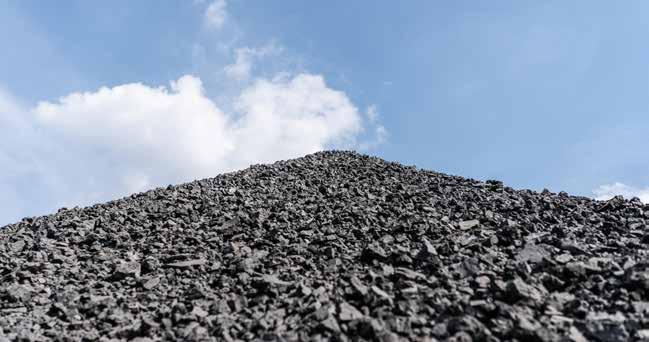
3.2 Consumption of materials


The most important raw material in quantitative terms for steel production is ferrous scrap originating from Italy or abroad.
Alfa Acciai and Acciaierie di Sicilia conduct strict and severe inspections of ferrous scrap entering the plant through documentary checks, under the supervision and assistance of the Environment Service, as well as visual and radiometric checks, in accordance with the regulations in force6
Radioactive source detection
Among the scrap inspection operations, the most important one is a strict check to ensure that incoming scrap is not contaminated with radioactive material.
Since 1997, and as one of the first in Italy, the Group has been implementing an extensive and complete detection system covering the entire production activity in order to avoid the accidental melting of radioactive material.
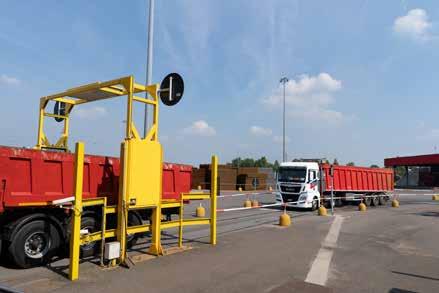
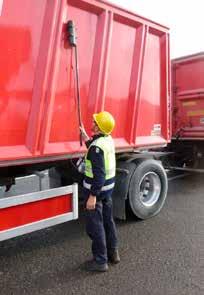
A summary of the incoming raw materials acceptance process is given in the diagram below:
6) Further details on scrap procurement and radiometric source detection can be found in the section entitled "Scrap incoming inspection" and the Chapter "X-ray monitoring at the plant" in the Alfa Acciai 2021 Observatory Report. Additional information on the supplier selection and assessment process is also available herein under Chapter 5.
VEHICLE CHECK-IN
Ferrous scrap is the main raw material used. In fact, in 2022 nearly 1.7 million tonnes of ferrous scrap were melted in the furnaces at Alfa Acciai and Acciaierie di Sicilia, accounting for about 95% per cent of the total raw materials used by the two companies.
In addition to the various types of scrap, the steel mills use other materials such as lime, ferroalloys, magnesite and coke, while wire rod and bar for reinforcing concrete are the raw materials of Ferroberica, Tecnofil and Alfa Derivati, which verticalize the product. The following tables show the quantity of raw materials and process materials consumed in 2020-2022, where the subdivision into
renewable and non-renewable materials required by GRIs is not applicable to the steel industry In fact, the resources required are not generated in short periods of time. However, the Group is committed to containing its environmental impact and reducing its use of resources, making extensive use of recycled raw materials
The year 2022 was characterised by a drop in production volumes due to the energy crisis following the Russian-Ukrainian conflict. The quantity of materials consumed is comparable to that of the year 2020, which was also characterised by the pandemic that affected the production of the entire Group.
SHREDDER
The manufacture of steel requires not only raw materials but also process materials which are crucial to production. For example, additives and process agents help to form and regulate the chemical composition of steel and the slag protecting the steel bath; refractory materials protect the EAFs and ladles and reduce heat loss; inert gases are used to stir the bath to homogenise it. Basically, these materials are essential for a quality product.
Process materials
POLYMERS
A test project commenced at Alfa Acciai in 2021, involving the use of polymers obtained by recycling used plastic in accordance with standard UNIPLAST-UNI 1967, capable of partially replacing coal and its derivatives as a reducing agent in the oxi-reduction reactions of ferrous materials
The replacement process transpired gradually with a use percentage rising to 18% in 2022, while the experimental phase is still ongoing for Acciaierie di Sicilia.
The use of these recycled materials facilitates a reduction in emissions and decarbonisation, while also ensuring that more plastic is recycled and optimised.
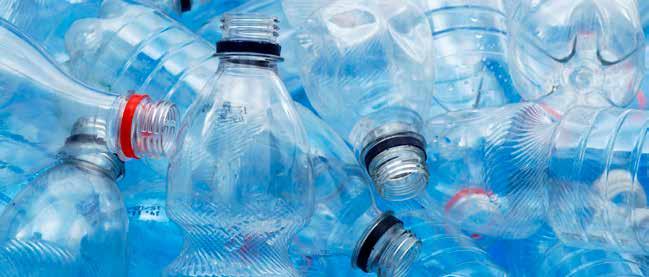
In the course of 2022, the use of polymers instead of coal was further consolidated in order to minimize the use of fossil fuels in the steel production process.
Indeed, the use of polymers was tripled while the use of coal decreased accordingly.
7) This is the raw material used by the Group companies
from recycling (amounting to 2,430 tonnes).
In addition to ferrous scrap, which is the main input for the process, another recovered material used consists of refractory materials coming from the maintenance of the melting furnace.
100% of spent refractory material coming from the demolition of the melting furnace are fed back into the production cycle as partial raw material substitutes (magnesite).
The raw materials to be replaced is magnesite, which is used as an additive in the Electric Arc Furnace (EAF) melting process. Their reuse in the furnace has no negative impact on the environment; indeed, it preserves the consumption of new natural resources.
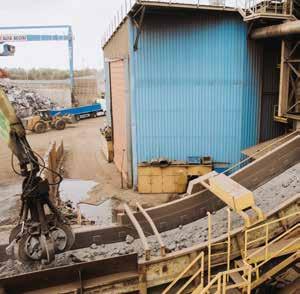
POLYMERS USED AT ALFA ACCIAI IN 2022 COMPARED TO TOTAL ADDITIVES
Looking at the figures relating to recycled raw materials for the two steelmaking companies, the percentage of use is 95% in 2022, in line with the previous three years. This result highlights the Group’s circular vocation with a very high portion of recycled materials entering its production process.
3.3 Management of water resources

Water plays a crucial role in the steel production process. The effective use of water is very important for the Group, which uses supply sources that minimise impact on the territory and adopts the best technical solutions for cooling systems to limit water consumption.
For the purpose of sustainability along the entire value chain, in 2021 the company Tecnofil adopted a packaging system with metal straps in place of traditional plastic straps to ensure packaging that is 100% recyclable.
Where plastic is not yet replaceable, the company is carrying out technical tests at the automatic packaging plant to receive and use environmentally sustainable materials in order to further minimize its ecological footprint.
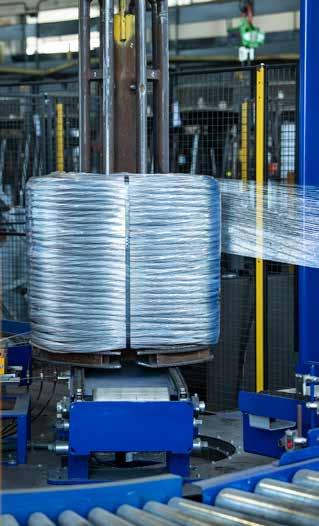
Water comes from the council water supply for domestic and sanitation purposes and from company wells for industrial use. More specifically, the water for industrial purposes is used to make up evaporated water from indirect circuits (furnaces, rolling mills, ingot moulds and continuous casting plants) and direct circuits (continuous casting spray and direct cooling for rolling mill products).
The water stress level was assessed using the Aqueduct tool. This is based on an overall water risk index and 13 indicators that cover various types of risk, aggregating and weighing all indicators selected from Physical
The table below shows the Alfa Acciai Group's water supply figures for the three-year period considered.
Quantity, Quality and Regulatory & Reputational Risk categories i.e. indicators that consider availability in terms of quantity, quality, legislation and its evolution.
10)It is specified that, unlike what was reported for the two-year period 2021-2020, Acciaierie di Sicilia's water consumption for 2022 was not estimated. having obtained the precise figure. In addition, for the reporting of water volumes from water stress areas, water stress areas from medium-high upwards have been considered based on what is reported on the website www.wri.org

Considering this overall indicator, all of the Group companies fall within a medium-high/high water stress category.
Consumption trends are affected by steel production in general. In practice, the increase in performance efficiency of cooling systems is directly proportional to the increase in steel production, as evaporation and discharges also occur with low production levels. With regard to Alfa Acciai alone, rainfall is a second factor affecting water supply, as with higher levels of rainfall distributed throughout the year, more rainwater is recovered in direct cooling circuits. Unfortunately, rainfall levels have been below historic averages in recent years, and have been concentrated in short, intense bursts that have reduced volumes that could be reused in the site's water circuit.
In spite of this, at a m3/t level there has been a specific reduction in water consumption of approximately 2% compared with 2021, and when comparing with 2020 – a year in which production was comparable with that of 2022 – the reduction was 4%.
Alfa Acciai and Acciaierie di Sicilia consume the largest amount of water in the Group because hot processes, such as melting and rolling processes, require large amounts of water for the indirect cooling of plants and the direct cooling of products/semi-finished goods.
Alfa Acciai has a water collection and treatment system for first flush and runoff rainwaters which, following a specific process, enables rainwater to be put back into the industrial water circuits, reducing the amount taken from wells. Moreover, the Group's policy is to reuse water as many times as possible before it is discharged. The
cooling system actually recirculates the water for over 30 cycles before discharging it. This enables significant water savings with regard to the need to cool plants, amounting to approximately 74 million m3/year for Alfa Acciai alone. Makeup water from wells represents less than 3% of plant requirements, and is required to offset steam from cooling towers and industrial discharges. The remaining 97% of plant water required therefore undergoes continuous recirculation before being discharged.
With regard to water discharged, given that Alfa Acciai, Acciaierie di Sicilia and Tecnofil have obtained Integrated Environmental Authorisation, they must comply with specific quality standards based on BATs in the respective production sectors. Where necessary, these are integrated with local evaluations implemented in the authorisations to establish quality and monitoring frequency. For Alfa Acciai alone, as a result of a revision of the authorisation in July 2022, the monitoring frequency of industrial water discharge into surface water bodies was established on a monthly basis. Domestic wastewater, which can be discharged into the sewage system, is not monitored.
The Group systematically monitors water consumption and is committed to preventing water used in cooling processes from being wasted, by implementing closed circuits, using the latest technologies, and blowing down indirect cooling circuits to fulfil the needs of direct cooling circuits.
3.4 Waste management
Based on one of the most established circular economies, the Group continues to pursue a responsible and, more importantly, sustainable production strategy, devoting the utmost attention not only to the use of resources but also to the valorisation of waste from its own production.
Alfa Acciai and Acciaierie di Sicilia, the two Group’s steel mills, base their production process on circular economy principles by melting ferrous scrap in electric arc furnaces, thereby giving it new life and reducing the consumption of raw materials. Steel manufacturing also creates waste which the Group is committed to reuse in other production processes, thus fuelling the value chain in other circular economies, thereby optimising every output material.
Reducing the amount of waste produced is certainly one of the Group's main objectives, which is flanked by a series of measures aiming at optimising waste, where it cannot be minimised, thus encouraging recovery instead of landfilling.
The Group's commitment to this is demonstrated with Alfa Acciai’s results alone, which generates more than 85% of the entire Group's waste, rising from 15% waste sent to recovery in 2017 to 71% in 2022, an increase of 8 points over 2021. The Group's result reflects these values with 70% of waste sent to recovery processes.
The increase in this indicator has consequently reduced the Group's waste delivered to disposal to 30% (vs. 36% in 2021, 40% in 2020 and 60% in 2019). This is evidence of how the efforts made and the zero-waste objective are part of the Group's identity.
The diagram below shows how the ferrous scrap circular economy is related to other circular sub-economies resulting from the steel production process:
▶ black slag from the steel production process is sent to recovery systems to obtain an inert material that can be used to replace virgin materials mined from quarries, thereby preserving natural resources;
▶ thanks to sorting operations, non-ferrous metals (aluminium, copper etc.) are obtained from the ferrous scrap shredding process, and can be put to good use on other external production cycles;
▶ metal dust with a high zinc content is generated from the melting process, which enters other circular production cycles designed to extract zinc metal, a highly precious element for our economy;
▶ mill scale is generated from rolling processes, which is basically an iron oxide that is used to produce cement clinker;
▶ recovering refractory materials is also important for making the most of production waste, as it preserves important natural resources.
SHREDDER
VEHICLE
The Group is continually looking for new opportunities, that can further optimise the recovery of all production waste in accordance with legislation. In particular, in the coming years, primary efforts are focused on white slag (an aggregate that develops during steel treatment in the ladle), which is the final obstacle to reaching 100% circular steelmaking.
The Group regularly monitors the waste data that are analysed by the company's management system, using special structures (environment departments). The structures are well established, a sign that many things
have been done, but the activity of computerisation and advanced automation is still ongoing as the evolution of processes and regulations require increasing focus so as to be always at the forefront.
The table below contains the quantity of waste produced, broken down by hazardous and non-hazardous waste for the 2020-2022 period.
The figures confirm that the circular economies to which we are linked are well established thereby allowing us to maintain high percentages of waste that are recycled or intended for recovery facilities.
In line with the reporting standards adopted (GRI standards), a breakdown of the waste produced is shown in the table below, highlighting the
The Group’s commitment to waste recovery also applies to hazardous waste with more than 85% (87% in 2022) of the quantities sent for recovery was confirmed, compared to the total hazardous waste generated by production processes.
3.5 Commitment to energy efficiency



Steelmaking facilities, which melt scrap using an electric arc furnace (EAF), are particularly energy-intensive and Alfa Acciai Group companies have set ambitious targets to reduce energy consumption from fossil fuels and are committed to increasing the amount of energy from renewable sources.
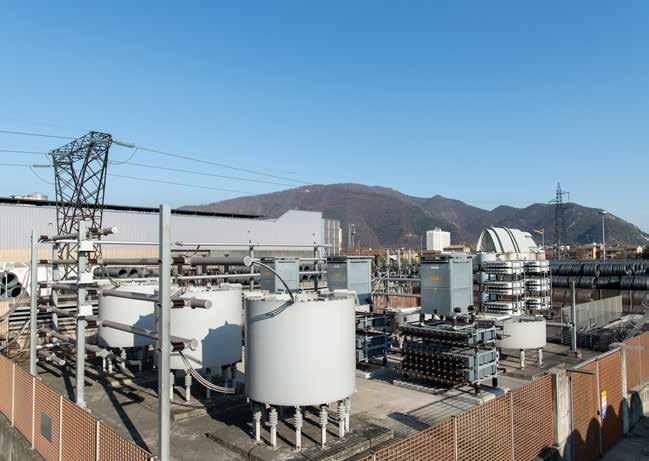
The main source of energy required to melt scrap is electricity, which accounts for the Group's main energy consumption, followed by the combustion of natural gas, which is a much smaller source. Electricity consumption is also necessary for auxiliary processes, such as environmental monitoring and production services. With regard to the hot rolling of billets produced by the steel mill, the
main source of energy is instead of natural gas, which is used to power the billet heating furnaces, where electricity consumption is secondary.
Lastly, the consumption of Diesel fuel to power vehicles and the means used to handle the finished or semifinished product is minimal, as is the consumption of LPG for cutting rebar to size.
A comparison between 2021 and 2022 shows a decline in all consumption items over the past year. Overall, the decrease accounts for 16% and is mainly due to shrinking volumes. Looking at the energy intensity (GJ/tonne), a decrease of about 4 per cent compared to 2021 is welcomed.
Looking at the energy intensity data, which relate total energy consumption to total finished/processed products, an improvement in energy intensity over the previous year is evident.
12) The figure is net of grid losses and reflects the
ISO 50001 CERTIFICATION
reached another achievement - ISO 50001 certification for its Energy Management System, which aims to facilitate the process to define, record and evaluate energy results, and is the best instrument for managing and implementing the company's Energy Policy.
Alfa Acciai's strategic priority is to continually improve its performance, including energy performance, through the implementation of energy efficiency measures in production processes and related auxiliary services to reduce environmental impact. This is all thanks to:
Automation systems for monitoring energy parameters
Diagnosis of consumption and definition of actions
Choosing cutting-edge technologies that contain energy consumption










1 2 3
In 2022 Alfa Acciai consolidated operations initiated in 2021 and completed new initiatives with a view to implement operations that lead to continuous increase in energy savings and the use of renewable sources, including:
▶ the use of polymeric materials from recycled post-consumer plastics in compliance with UNIPLAST UNI 10667 that can replace coal and its derivatives as reducing agent in iron ore oxidation reactions in order to decarbonise the steelmaking process;
▶ quick lime unloading in melting furnace 1 implemented in August 2021 resulting in energy and cycle time savings;
▶ the heat transfer plant for the recovery of thermal energy from the steel mill's heat waste, and the transfer of heat to the Brescia district heating system. Considering the important impacts generated for the community of Brescia, the following page is entirely dedicated to the plant;
▶ The organisation has launched an energy policy certification process, already implemented over the years in the steel group, in accordance with the UNI ENI ISO 50001 standard; Alfa Acciai achieved energy certification in January 2023, the other Group companies will follow.
As part of ongoing quest for greater energy savings, throughout 2022 Alfa Acciai implemented the following initiatives, the results of which will be quantifiable and verifiable during 2023:
▶ energy efficiency of the rolling mill production unit through the implementation of new algorithms for the optimisation of reheating ramps as well as of an innovative process tracking and job scheduling management, in order to achieve better control of reheating furnaces and production, thereby favouring the loading of hot billets into the furnaces;
▶ complete revamping of the intermediate phase of the wire rod mill, which will bring benefits in terms of plant reliability for availability (KU) and performance (KE), following the revamping of the electronics and the entire electrical power system;
▶ Level 2 system for combustion control of reheating furnaces that will optimise methane consumption during programmed or accidental transients.
Further initiatives are in the pipeline for 2023 and the following years, including:
▶ installation of new slag door with cleaner to reduce liquid cooling and oxidation for the benefit of energy consumption in the melting process;
▶ installation of a new high-efficiency burner to maintain the temperature of the ladles prior to tapping, with the aim of reducing the electricity consumption of the secondary metallurgy process;
▶ continuation of the multi-year programme to replace part of the cooling water pumps of the wire rod rolling mill in order to increase pumping efficiency;
▶ monitoring of the compressed air output of each production plant and the consumption of the relevant rolling mills. The launch of audits of compressed air generating systems.
▶ activities to improve the efficiency of the off-gas systems generated by the melting process;
▶ new weighing system at the scrap yard, areas 2 and 3. This system will allow better standardisation of the process and related energy efficiency at the melting furnaces.
The Alfa Acciai site in Brescia has
THERMAL WASTE RECOVERY AND HEAT TRANSFER PLANT
Alfa Acciai is aware of its role in the community and, thanks to the location of its facilities near the residential area south-east of Brescia, it has been able to invest and implement over the years projects to research new sustainable solutions, through the industrial plant for heat transfer to the Brescia district heating.
The plant recovers the energy dissipated by the steel plant's off-gas cooling system to contribute to meet the energy requirements of Brescia’s inhabitants by a highly energy-efficient heat exchange system that lines the steelmaking process and the A2A district heating network. The heat transfer facility is based on a sophisticated control system that ensures the optimisation of heat energy recovery through predictive algorithms that drive the heat transfer station with reference to the steel mill process.
The heating system consists of innovative components with high efficiency and thermal stability due to significant energy storage.
During the 2022-23 winter period, completion of the energy recovery project covering the entire steel mill by linking both melting furnaces to the recovery plant continued successfully. In addition. a project is in the pipeline to increase the supply to the district heating above the nominal temperature. In this new plant configuration, the following benefits will be achieved:
▶ savings amounting to 4,000 tonnes of oil equivalent (TOE) a year;
▶ atmospheric emissions prevented: 10,000 tonnes/year of CO2, 1,600 kg/year of CO and 8,000 kg/year of NOx plus a drastic reduction in PM10 and PM2.5 particles;
▶ reduction in the heat dispersed into the atmosphere and the consumption of makeup water by approximately 4,000 m3/year - an increasingly relevant issue as a result of climate change.
Apart from being a virtuous example of circularity for the recycling of ferrous scrap, with this project Alfa Acciai is moving towards energy circularity and contributes to the decarbonisation of the urban fabric by valorising the heat that would otherwise be dispersed into the atmosphere.

Oil-equivalent savings
~4,000 ~10,000 ~4,000
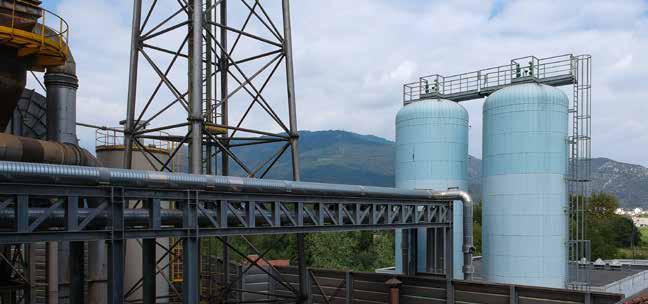
In 2022, operations at Acciaierie di Sicilia focused mainly on the implementation of two significant projects, whose benefits will take hold in 2023:
▶ the installation of a Static Var Compensator (SVC) to achieve an increase in the furnace's average active power to the order of 5%; reduction in energy consumption of approximately -1.5%, power-on reduction of approximately 1-2 min/heat and reduction in electrode consumption due to increased electric arc stability;
▶ installation of plants required for the hot charge process (approx. 800 °C) and synchronisation of production at the steel mills and rolling mill, thereby enabling energy savings of methane consumption to the order of 30-50% compared with conventional cold charging processes.
For 2023:
▶ the hot charge process will be further optimised by better aligning steel mill and rolling mill productivity levels;
▶automated scanning will be implemented in the steel mill to reduce Power OFF times in the smelting furnace, benefitting productivity and enabling the sampling of test pieces and temperature automatically without an operator present, thereby also increasing operator safety;
▶ work is scheduled to organise an energy policy in compliance with the energy management system standard UNI CEI EN ISO 50001, which includes the optimisation of the energy consumption monitoring system;
The company Tecnofil has reinforced the initiatives implemented in previous years and for 2023 is planning the following:
▶ due to the issues in sourcing electronic components, the work for the electrical revamp of the three wire drawing machines to change them from having a DC motor to an AC motor was postponed until the first half of 2023;
▶ implementation of 11-pass drawing machine, with optimised automation for the production of a new range of wire with small diameters;
▶ feasibility analysis for the implementation of a photovoltaic system on the roof of the building.
The company Alfa Derivati is planning the following for 2023:
▶ optimisation of energy consumption of the plant to cool welding benches, upgrading the automation to manage the pumping system using inverters;
▶ new equipment to reduce product change times on welding machines;
▶ intelligent automation and implementation of inverters for the off-gas system.
Finally, in 2022 Ferroberica recorded a 70% decrease in the consumption of LPG compared with 2021, thanks to the installation of machinery for cold cutting bars. This is a great result because it concerns the use of fossil fuels and therefore a reduction in CO2 (Scope 1) emitted by Ferroberica.
Alfa Acciai: array of pipes supplying the heat recovery plant from the steel mill and storage tanks
3.6 Management and monitoring of GHG emissions

Energy efficiency levels are returning to pre-pandemic levels in Europe though they are not yet in line with the trend expected for achieving net zero in terms of pollutants and climate changing emissions. The 2021 report by the International Energy Agency outlined the need to increase investments before 2030 to incentivise the expansion of technologies and solutions to reduce greenhouse gases to zero by 2050, as set out in the Roadmap to Net Zero by 2050.
The EU emission trading system (ETS) was reformed
Emission Trading System
to achieve these targets. This initiative aims to reduce assigned quotas of greenhouse gas emissions, especially those from energy-intensive industries and power stations, thereby including Alfa Acciai and Acciaierie di Sicilia as electric arc furnace steel producers.
In the third ETS period (2013-2020), the Alfa Acciai Group did not need to purchase allowances in addition to those allocated as a result of its plant performance; the same occurred in the first and second year (2021-2022) of the fourth ETS period.
The EU ETS is based on a Cap-and-Trade principle, i.e. a limit is set on the maximum amount of CO 2 that can be released by plants covered by the system at European level. Companies can buy or sell allowances on the basis of their requirements within this limit. Once a year the companies that participate in the EU ETS must report the tonnes of CO 2 released. A limited number of emission allowances is assigned free of charge to some companies, on the basis of standard allocation rules applied throughout Europe. Companies that do not receive free emission allowances at all, or receiving insufficient amounts to cover the emissions produced, shall buy the emission allowances at auction or from other companies.
The emissions monitored and reported by Alfa Acciai Group companies are divided into Scope 1, Scope 2 and Scope 3 categories. More specifically, according to the definition of the Environmental Protection Agency (EPA), Scope 1 emissions are direct greenhouse gas (GHG) emissions that are generated by sources controlled or owned by an organisation (e.g., emissions associated with the combustion of fuels in boilers, furnaces, vehicles).
Scope 2 emissions are indirect GHG emissions associated with the purchase of electricity, steam, heat, or cooling.
Although Scope 2 emissions physically occur at the facility
where they are generated, they are accounted for in an organisation's GHG inventory because they are the result of the organisation's energy use.
Scope 3 emissions are indirect emissions generated by the Group's operations, which transpire from sources that it does not own or control. They account for the largest proportion of the company's carbon footprint and include emissions from operations upstream and downstream of the production system, i.e. transport and distribution, and the disposal of goods and services after they have reached consumers.
The Group decided to quantify and declare its corporate emissions in 2022, and its Corporate Carbon Footprint was calculated as per UNI 14064-1 certification, with the scope the same as that reported in the Sustainability Report. Thanks to this new certification it was possible to map the Group's indirect emissions (Scope 3) as the sum of 4 categories: 28%
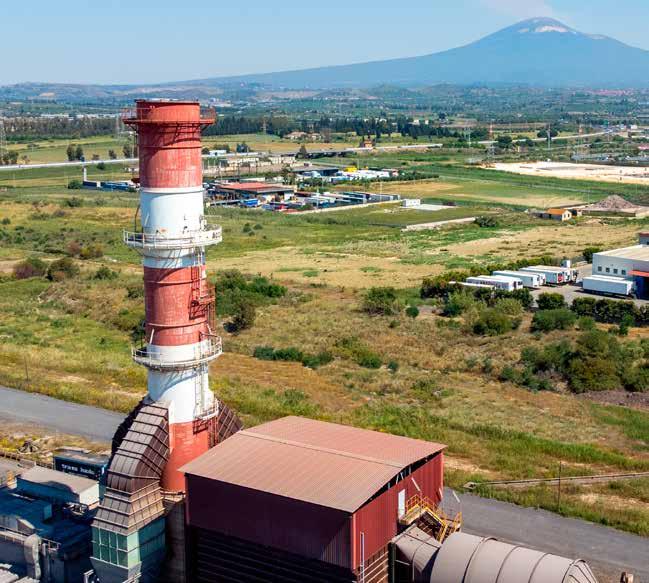
Direct emissions GHG (Scope 1) (tCO2e)
Performance improved for Scope 2 with respect to the previous report thanks to the combination of 2 factors
reduction in overall energy intensity at a Group level and significant improvement in the Italian residual mix, which decreased by approximately 20gCO2/kWh. This caused a reduction of approximately 13 kgCO2/t due to the combination of the aforementioned factors.
Looking at the Group's emission intensity, ongoing improvement can be seen over the last three years. The comparison between the years 2020 and 2022, which are similar years from a production point of view, shows a clear improvement in terms of emission intensity.
13) For the calculation of direct CO2eq (Scope1) emissions, DEFRA emission factors 2020, 2021 and 2022 were used for the relevant years.
14) Relating to Alfa Derivati, Ferroberica, Tecnofil.
15) For the calculation of emissions linked to the consumption of natural gas and the use of carbon materials at Alfa Acciai and Acciaierie di Sicilia, which are covered by the EU-ETS Emissions Trading Scheme, the 2020, 2021 and 2022 ETS method has been adopted for the years of reference.
Based on the breakdown by scope of greenhouse gas emissions from the CFO calculated according to
indirect Scope 3 emissions account for almost two-thirds of the Group's total greenhouse gas emissions (tCO2eq).
Given the importance of indirect Scope 3 emissions, the Group is also considering the greenhouse gases generated by transport, and the system for booking times for scrap supplies which was set up in 2020 in Alfa Acciai and in 2021 in Acciaierie di Sicilia is now established. Following the successful testing in 2022 of the booking system for finished products at Alfa Acciai, the system will definitely be introduced during 2023 and subsequently extended to Acciaierie di Sicilia. These measures enable more regular
incoming and outgoing flows, thereby eliminating waiting times and queues of lorries, resulting in more sustainable transport and less environmental impact.
The Group’s further significant commitment to sustainable logistics is the use of an intermodal transport mode to and from Central Europe, thereby finished products are exported and raw materials (ferrous scrap) are imported through the Montirone railway hub.
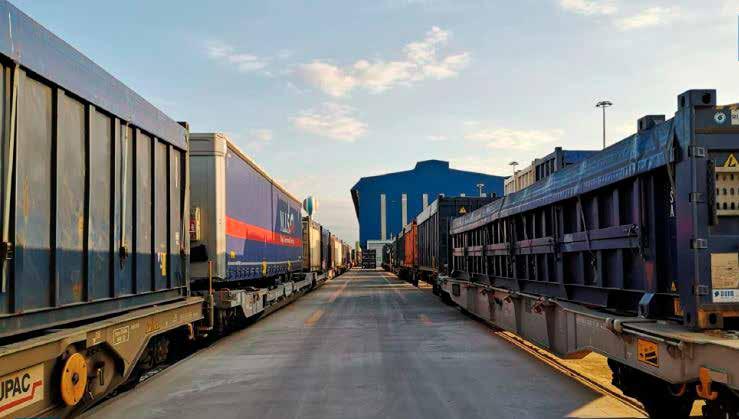
With a view to enhance sustainable mobility, Alfa Acciai carried out an in-depth assessment of home-towork commuting habits of its employees This led to the identification of several measures to optimize the use of private cars and reduce vehicular traffic. These measures are grouped along five key lines of intervention and strategies of interest: discouraging the use of private cars (car pooling), promoting public transport, cycling and/or micro-mobility, reorganising the demand for transport and
promoting employee awareness on issues of sustainable mobility.
The most important steps taken at the Alfa Acciai site include: the arrangement of parking spaces for cars and bicycles to encourage the use of alternative means of transport to the private car, participation in the European Mobility Week, the agreement with Brescia Mobilità for Local Public Transport, and the downsizing and gradual electrification of the company fleet.
3.7 Other atmospheric emissions
GRI 305-7
Nitron dioxide (NOx) and other significant emissions
Atmospheric emissions from the stacks connected to the melting and rolling process, especially for Alfa Acciai and Acciaierie di Sicilia steel mills, account for almost all emissions. Emission management is a priority for the Group, which complies with it in accordance with the provisions of the environmental authorisations of the various production sites with a view to reducing the impact and complying with current legislation.
By setting up systems to continuously monitor the performance of off-gas systems and related parameters, it is possible to achieve very high performance in containing the dust leaving the stacks, even exceeding the performance indicated at the EU level in the BAT conclusions.
The Alfa Acciai Group regularly monitors significant emissions generated by its production processes, the total values of which are presented in the table below.
(As, Cd, Cr, Ni, Cu, Sn, V, Co, Mn)
The emission analysis in terms of volume flows shows a certain stability compared with previous years, thanks to the performance of environmental measures with control and maintenance actions remaining high over the years. Emission volume flows are calculated identically for all of the Group companies, and based solely on certificates of analysis regarding emissions, as set out in the plan for monitoring and checking existing environmental authorisations.
All measures taken to reduce dust at the stack have contributed significantly to minimising other pollutant emissions linked to dust concentrations, such as heavy metals and organic micropollutants. In particular, Alfa Acciai and Acciaierie di Sicilia are equipped with a system to inject activated carbon in the outlet upstream of
the bag filter which, alongside controlling process parameters and raw materials, has effectively reduced the concentration of dioxins and furans (PCCD/F), which are monitored continually with a sampling device called Dioxin Monitoring System (DMS).
In addition, the Group takes constant action with plant maintenance programmes in order to maintain efficient facilities and ensure high performance resulting in dust and metal emissions close to the technical minimum possible.
All the measures put in place, combined with careful management of the environmental installations, make it possible to keep the concentrations of atmospheric emissions well below the limits set by the integrated environmental authorisations
The railway hub in Montirone (BS)
Air Quality in Brescia
Air quality is a very complex issue, as the atmosphere is not a ‘closed-loop’ system and is subject to continuous exchanges and interactions and, in a given area, it not only depends on local sources of emissions, rather it can often be affected significantly by sources of emissions localized in distant geographical areas, which reach us through complex transport and diffusion phenomena characterising the atmosphere. When tackling the complex topic of emissions and air quality, it is therefore important not to focus solely on the area investigated in the vicinity of individual sources, but also to extend the analysis to a much wider area.
In November 2015 Brescia City Council set up the Osservatorio Aria Bene Comune, a quality watchdog of air as common asset, which published its first report in 2021 and its second in April 2023 to update the previous version on the basis of information processed from the atmospheric emissions inventory (INEMAR), whose data update was published in 2019. The atmospheric emissions inventory (INEMAR), which is developed and managed by the Lombardy Environment Agency (ARPA), provides a list of polluting sources split into 11 macro sectors, in which industrial emissions are defined by two macro sectors - industrial combustion and production. With regard to Alfa Acciai, emissions attributable to melting operations come under the macro sector 'production processes', whereas all heating activities for rolling operations come under the macro sector 'industrial combustion'.
The diagrams below show annual emission calculations for the Brescia City Council district and the Brescia16 municipality.
Annual PM10 emissions in the Brescia City Council district (Atmospheric Emissions Inventory (INEMAR) 2019 – public review)
16) According to the criteria set out in regional legislation, the Brescia City Council district includes: Botticino, Bovezzo, Brescia, Castelmella, Castenedolo, Cellatica, Collebeato, Concesio, Flero, Gardone Val Trompia, Gussago, Lumezzane, Marcheno, Nave, Rezzato, Roncadelle, San Zeno Naviglio, Sarezzo and Villa Carcina.
Annual PM10 emissions in the Brescia Municipality (Atmospheric Emissions Inventory (INEMAR) 2019 – public review)
The analysis of the emissions shows, for both the Brescia Municipality and the City Council district, a major contribution from ‘Road transport’ and ‘Non-Industrial combustion’, especially from biomass combustion.
In the Brescia Municipality the value of this contribution fell considerably thanks to the district heating network, which also receives input from Alfa Acciai with approximately 20 MWt heat recovered from their production processes.

3.8 2030 Sustainable Development Goals
Sustainable Development Goals Target
6 - Clean water and sanitation Target 6.4

▶ Considerably increase the efficiency of water use in every sector by 2030 and ensure sustainable drinking water supplies and procurement to address water scarcity and substantially reduce the number of people impacted by it.
7 - Clean and affordable energy Target 7.3

▶ Double the rate of improvement in energy efficiency globally by 2030.
9 -Industry, innovation and Infrastructure Target 9.1

Alfa Acciai action
▶ 97% of water demand at Alfa Acciai's facilities, relating to water withdrawn from wells, is continuously recirculated for more than 30 cycles before being drained off. In this way, some 74 million m 3/year of water savings can be achieved in relation to the plant cooling needs of Alfa Acciai alone.
▶ Alfa Acciai has a first flush and runoff rainwater collection and treatment system that, following a specific process, allows rainwater to be replenished into industrial water circuits, thus reducing withdrawals from wells.
▶ During 2022, Alfa Acciai confirmed the energy efficiency measures implemented in 2021-2022, which generated energy savings of 2.14 kWh/t (i.e., 9,342 GJ) compared to the 2020 baseline.
▶ Develop quality, reliable, sustainable and resilient infrastructure, including regional and transborder infrastructure, to support economic development and human well-being, with a focus on affordable and equitable access for all.
11 - Sustainable cities and communities Target 11.6

▶ Reduce the adverse per capita environmental impact of cities by 2030, including by paying special attention to air quality and municipal and other waste management.
▶ Through an innovative and efficient system for recovering thermal energy from Alfa Acciai’s production site, the thermal waste recovery plant contributes to the supply of the district heating network already serving the city of Brescia.
Sustainable Development Goals Target Alfa Acciai action
12 - Responsible consumption and production Target 12.2

▶ Achieve the sustainable management and efficient use of natural resources by 2030.
13 - Promoting actions, at all levels, to combat climate change
Target 13.2 Integrate climate change measures into national policies, strategies and planning.

▶The finished product of Alfa Acciai and Acciaierie di Sicilia has a minimum recycled content of 99% percent for both steel mills as proven by UNI/PdR 88:2020 Certification according to UNI CEI EN ISO/IEC 17067.
▶ Spent refractory materials from the demolition of the melting furnace are shredded and returned to the production cycle as partial raw material substitutes (magnesite).
▶ Alfa Acciai is committed to replacing coal and its derivatives, which are used as additives and process agents, with recycled polymers that help reduce emissions.
▶ Alfa Acciai and Acciaierie di Sicilia have implemented a booking scrap and process raw materials supply time-slot system, thereby reducing the environmental impact of PM10 dust emissions generated by heavy vehicles, which are partly responsible for the complex phenomenon of environmental pollution.
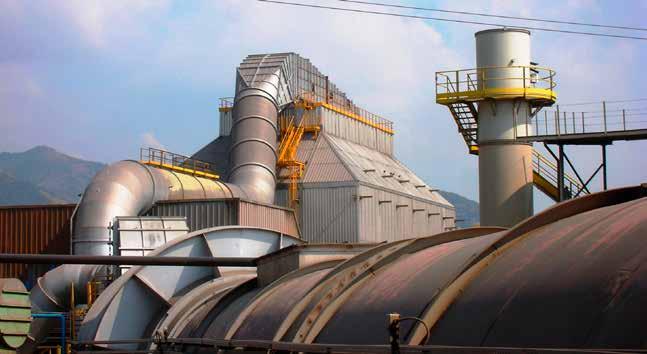
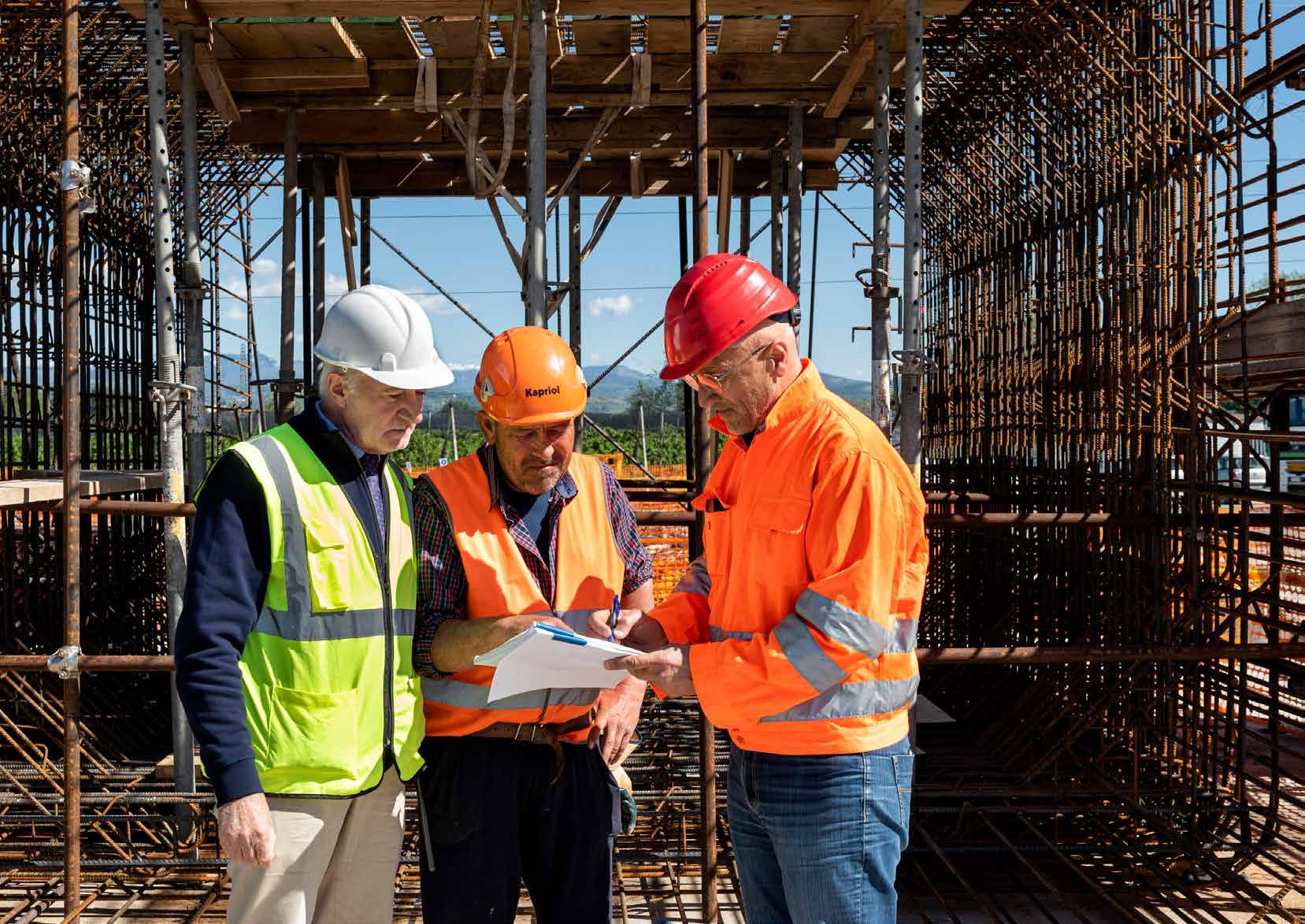
SOCIAL RESPONSIBILITY CARING FOR PEOPLE AND LOCAL COMMUNITIES
Social responsibility
Caring for people and local communities


4.1 The people of the Alfa Acciai Group
A key factor in the success of a company lies with its employees and collaborators. For this reason, as indicated in the Code of Ethics, all Group’s companies protect and promote the value of human resources in order to ensure a work environment that is safe, welcoming and supportive of the development of each individual’s skills.

Group companies saw an increase in the number of employees from 1,207 in 2021 to 1,221 in 2022, of which more than 55% are within the Parent Company, thus ensuring job stability and security in a time characterized by general instability and job uncertainty. Where there is a decrease compared to the previous year, it is because there has been a drop in temporary work contracts in favour of direct hires.
Historically, the steel manufacturing industry has mainly
employed men. Keeping pace with development in wider society, the Alfa Acciai Group has also given female employees at the company opportunities to progress in traditionally male roles, and sets a yearly goal to increase the percentage of female recruits. Thanks to the flexibility guaranteed by the Group, employees are able to achieve a suitable work-life balance, and embark on a pathway of professional development without having to neglect personal wellbeing.
Workforce by company and gender 2022

Personnel management complies with the principles of the Code of Ethics and is overseen by Alfa's RH department, which also provides support to the other Group companies.
Vincenzo Sidoti HR Manager at Alfa Acciai Group
Acciaierie di Sicilia
Alfa Derivati
Ferroberica
Tecnofil
Workforce by company (2022)
Ferroberica celebrating its 50th anniversary in Vicenza (June 2023)
For their own operations, the Alfa Acciai Group companies contract external staff for in-house services, such as: cleaning, plant installation work17, ordinary and extraordinary maintenance. The table below shows an estimate of the number of workers hired by contractors operating permanently in Group companies in the previous three years, with an increase of 87 units on 202118 17) These installation works are classed as “contracts” or "construction sites” under legislative decree 81/08.
18) It is specified that for Alfa Acciai and Alfa Derivati these data were extracted from the AlfaGest software, adopted by the two companies for the computerized management of safety. For Acciaierie di Sicilia, Tecnofil and Ferroberica, however, this is a rough estimate based on the number of personnel employed by permanently outsourced companies.
19) It is worth noting that the AlfaGest software provides the incoming clocking in of workers from outsourced companies and access to Alfa Acciai and Alfa Derivati is through the same gatehouse. Therefore, data are provided jointly for these two companies.
With a two-percentage point increase on 2021, the Group prefers the open-ended contract, which in 2021 accounted for 97% of staff, in line with the 2020 figure as the result of the entry at Alfa Acciai of new positions with other types of contracts. Furthermore, in 2022 as in the previous two years, 98% of the Group staff are employed full-time. Through these employment contracts the Group receives and ensures stability on the one hand and offers its em-
ployees a secure and permanent job on the other.
Furthermore, over the years the Group companies, except for Alfa Acciai, have employed temporary workers in the event of urgent, unexpected orders, for the purpose of resolving issues and unforeseen events linked to personnel recruitment, and meeting immediate workforce requirements.
Number of employees by type of employment Number of employees by type of contract
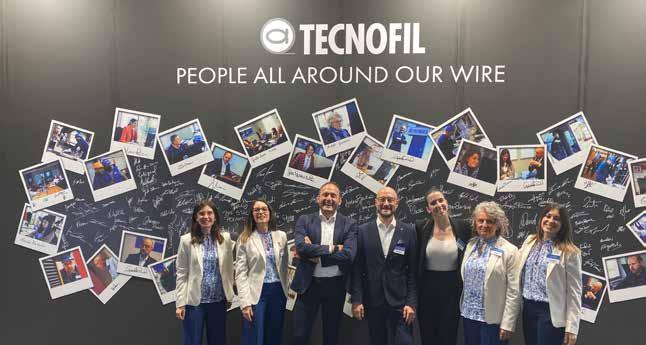
In 2022 there was an upturn in the number of people recruited. The hiring rate stabilised at 10%, with a higher concentration in the intermediate age group, showing a slight increase compared with 9% in 2020 but not yet in line with the figure recorded before the pandemic. The increase in new hires during 2022 is mainly linked to the recruitment of new personnel in Alfa Acciai and Alfa Derivati, to add new technical and management resources to replace people retiring, and to ensure that set
production targets were achieved.
In line with fluctuations in previous years, the layoff rate in 2022 stabilised at 10% with a higher concentration in the over-50s age group, showing a slight decrease compared with the previous year, albeit not comparable to the figure recorded in pre-pandemic years. Low staff turnover is a prerequisite for minimising the risk of losing talent and expertise.
4.2 Caring for wellbeing
Among the key objectives pursued by the Group is the focus on the well-being of employees to ensure a corporate climate that values people and fosters a harmonious coexistence between working life and the private domain.
As our Group operates in a country that has ratified the fundamental human rights conventions of the International Labour Organisation (ILO), all the Alfa Acciai Group companies are engaged to comply with these protocols.
In line with previous years, the Group is committed to maintaining an ongoing dialogue with trade unions with the aim of ensuring compliance with regulations and meeting the needs of its employees. In particular, collective bargaining applies to 100% of the Group's staff and follows the stipulations of collective agreements for first and second level employees.
The elimination of discrimination in the workplace (ILO conventions 100 and 111) is facilitated by the fact that the
Alfa Acciai Group employees who work on production sites are of various nationalities, and operate in a climate of sound social integration and mutual respect. Such diversity represents added value for the Group, and no cases of discrimination were reported for the three years reporting period.
The Group is aware that benefits for employees show appreciation and improve the working environment by enabling a satisfactory work-life balance. To this effect, it has invested on incentivising its most important asset, its people, as a strategic and key factor for the success of the Group as a whole.
Welfare platform within the Alfa Acciai Group
During 2022 a company benefit platform was launched in some of the Group companies, which was created from the outset with a focus on the integration of dedicated services that respond to the needs of employees. Age, lifestyle and family needs are useful indicators, because they determine personal life experience and hence guide towards the use of specific services, and the company has focused on these very aspects by promoting the increased affordability and range of services that the company benefit platform makes available.
The opportunities on offer were made available via a technological platform containing a basket of services and community benefit initiatives that can be accessed directly via the portal. Unlike salaries and other contractual entitlements, company benefits constitute the only element in the employer-employee relationship that concerns a private and personal aspect, such as wellbeing, and to protect it government regulations are strictly observed in addition to internal company policies to manage the process.
4.3 Training and professional development
The Group is committed to delivering regular training courses on different topics to facilitate professional development and update the skills and knowledge of personnel.
The training courses are generally outsourced and, in the last three years, they mainly covered they mainly covered the following topics:
▶ Health and safety in the workplace;
▶ Environmental skills;
▶ Metallurgical and engineering skills;
▶ Management skills.
In order to constantly stimulate the growth and further training of its employees, Group companies regularly participate in qualified seminars, webinars and conferences, covering a multitude of topics, both specific to the steel industry and general on economic and industrial trends. A priority for the Group is to develop the skills of personnel with the support of qualified industry professionals, who deliver on-the-job training and classroom-based theoretical courses.
The topic of health and safety has always been critical to the Group, and the peace of mind that comes with
maaging processes safely in the workplace in a suitable environment is something that Alfa Acciai's companies focuses on in their day-to-day operations.
With a mission to innovate various processes, training new engineers who specialise in the industry will be incentivised in the coming years, possibly with materials analysis and knowledge of new technologies.
Furthermore, English language courses have been arranged in order to reach a wider and more diverse group with whom personnel can engage and share expertise. These courses are split into groups according to specific departmental requirements the aim being to focus on language-specific learning.
Some of the Group companies have attended conferences, seminars and coaching classes providing new elements and the opportunity to engage with other organisations and analyse new markets, along with learning new sales tactics to aid the comprehension of customer requirements.
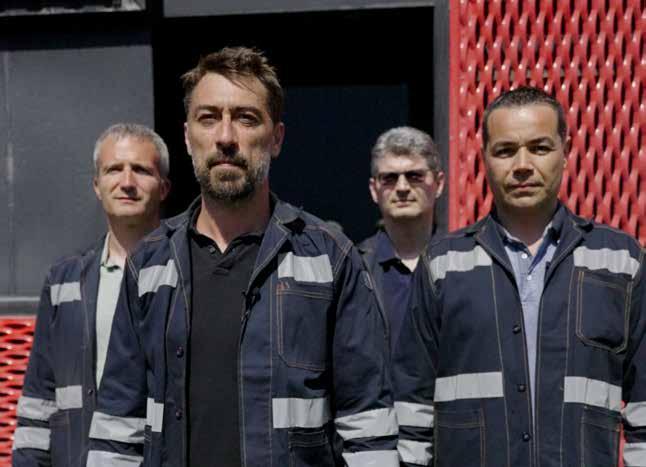
Given that professional development is central to facilitating business development, the Group has had a performance appraisal process in place since 2010 to analyse personnel work activities as part of ongoing improvement and professional development.
In line with the trend of previous years, this appraisal process involves 9% of the Group's active employees. This percentage rises to 28% if manual workers are excluded from the count, who represented 70% of the workforce in 2022 and are currently excluded from this appraisal process.
This is why the Group has set up Alfa Academy, the
of the collaboration with ITS Academy
vocational school intended to train people capable of dealing with the installation and maintenance of steel production and processing plants. The school programme offers the young participants classroom training sessions alternating with in-company work experience under a one-year apprenticeship contract.
Percentage of employees receiving regular performance and professional development appraisals
Some of the managers of Alfa Acciai’s technical team at Alfa Academy 2023
The Alfa Acciai Group believes in young people and takes steps to promote their entry into the labour market by supporting their desire to grow, learn and achieve their goals.
brainchild
Machina Lonati, a
4.4 Safety in the workplace and curret management system

The safeguarding and enhancement of workers' health and safety is one of the Alfa Acciai Group's top priorities.
Health and safety risks for workers in a steel production environment are high and implies a constant commitment to maintain a high level of attention on this topic, especially in contexts where routine actions lead workers to reduce their attention to risk and automatically apply procedures without reflecting on the implications of minimal differences. In this regard, the Group companies20 - Alfa Acciai, Acciaierie di Sicilia, Alfa Derivati and Tecnofil –have adopted and implemented the workers' health and safety management system, certified by an accredited third party21 to guarantee its compliance with the UNI EN ISO 45001 standard through yearly audits.
Certified systems are a means of ensuring to all stakeholders that the company's management keeps monitoring and continuously improving its safety and health performance.
The management system is supported, maintained and improved alongside an articulated delegation system that assigns powers and responsibilities; it is the main organisational tool with which to plan, implement and verify the pillars of the corporate strategy shared with all stakeholders and articulated in programmes of measurable and periodically monitored objectives and targets.
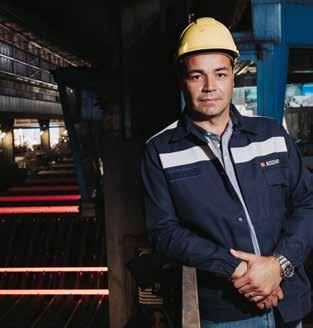
1. When setting safety objectives and targets, employers, jointly with their delegates, take into account the Safety Policy, legal requirements, analysis of accidents occurred and any communications from stakeholders, the outcome of Risk Assessment and Management reviews, operational needs and possible effects on the organisation's public image. All these elements enable the Group to define clear, relevant and comprehensive objectives.
2. In order to ensure the Group’s ability to achieve its objectives, the Group has developed and is adopting an approach based on the Risk and Opportunity concept, and all companies share the following responsibilities with regard to safety:
▶ promoting continuous improvement by ensuring that the relevant Management22/ Entities / Competent Departments achieve the safety objectives;
▶ ensuring that the implementation process of the Safety System is complied with in the various work phases;
▶ ensuring that the Entities and/or Functions under their direct control operate in compliance with the Safety System, contributing to its improvement.
3. As regards the role of workers in the management of safety aspects, they are also involved in the development and implementation of the OSH system through workers' safety representatives (WSR). Participation takes place through periodic meetings at intervals that vary from company to company and formal and informal meetings held on a daily basis.
4. The results of specific risk assessments, including the Risk Assessment Document pursuant to Legislative Decree 81/2008, are shared with managers and the WSR
in order to inform workers on risks and the management of all accidents and events, by posting the relevant analyses on notice boards in company’s communal places.
5. For the purposes of monitoring OS&H improvement plans and objectives, each Group company has set up periodic meetings at company level, during which the performance trends and process indicators are illustrated, any anomalous trends are analysed, opportunities for improvement are assessed and, in the event of significant
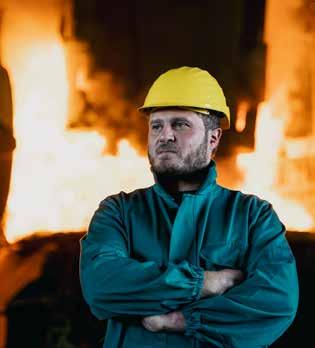
GRI 403-1; GRI 403-2; GRI 403-4; GRI 403-6; GRI 403-7
Juri Rossetti. Steel Mill Production Unit Manager at Alfa Acciai (since 2023)
22) Employers as defined by Legislative Decree 81/08
20) Currently, Ferroberica has the Management System not yet certified considering the type of operations performed. 21) All the updated certificates of the companies concerning the management systems can be found on the Group’s website www. alfaacciai.it.
Vincenzo Cardaci. Steel Mill Manager at Acciaieria di Sicilia
deviations from the planned schedule, the competent Management establishes the corrections to be implemented, including any extensions.
As a rule, the corporate improvement plans are reviewed annually as part of Management Reviews and following the occurrence of any critical events or situations.
6. Digitalised safety management through the creation of a digitalised environment was implemented by the AlfaGest software in 2004 at various levels by Alfa Acciai, Alfa Derivati and Acciaierie di Sicilia. Thanks to the continual optimisation of its functionality and application modules, AlfaGest is now able to collect and manage all information and data relating to work environments, employees, machinery, plants and equipment. AlfaGest makes it possible to have up-to-date documents and dynamic risk assessments, in line with legislation and company objectives. The software is also used as a health monitoring tool through an Occupational Medicine module. Access to this module is limited solely to company doctors, who can create a medical record for each employee containing health monitoring information, and can carry out statistical analyses regarding the workforce. Furthermore, in the case of environmental and biological analyses, aggregate results can be compared with average
values observed in the wider population who are not employed by the company.
The latest features implemented in AlfaGest concern:
▶ the contractor approval and authorisation system, whereby to qualify, contractors must upload all necessary documents to the system using a login ID and password. All documents must be approved by Alfa Acciai before authorisation to enter the site is issued.
▶ the digital editing of the Combined Risk & Interference Risk Assessment by employer representatives and operations managers at Alfa Acciai, and operations managers at the contractors involved. This also applies to site management as per section IV of legislative decree 81/08. The new system guarantees more control over the contractor approval process, the definition of tasks assigned to parties in the Combined Risk & Interference Risk Assessment to manage contracted work, and the widespread creation of hard and soft copies of the Combined Risk & Interference Risk Assessment. Furthermore, over the years Alfa Acciai and Alfa Derivati have invested considerably in the development of new application modules for the AlfaGest software, which has a crucial role in safety management and is being extended to other companies in the Group.

ALFA
IS SAFETY AMBASSADOR
Promoting and consolidating a culture of health and safety in the community, through communication campaigns carried out specifically by a group of ambassador companies focusing on specific areas in which to spread good practices. This is the idea behind the Confindustria Brescia project, Le Persone Prima! (People First) , dedicated to health and safety in the workplace.
Alfa Acciai is acting as a Safety Ambassador during 2023, along with 13 other companies in the province of Brescia. Focus sessions include training on safety, diversity and inclusion policies, company benefits and safety innovation . Proposals for improvement in all areas dedicated to personal safety will be developed systematically and across the board, with the aim of building a collaborative network that involves and engages different stakeholders in the industrial fabric of the province.
This project bears witness to the Alfa Acciai Group's commitment to promoting personal and collective wellbeing not only for business development, but also and especially for mutual support and consultation with the aim of reducing and preventing accidents.
4.5 Occupational diseases
As stated in the risk assessment documents, the companies in the Alfa Acciai group carry out surveys and health monitoring activities to prevent occupational diseaseamong employees.
Preventing occupational diseases and safeguarding the health of employees are implemented in all of the Group companies as follows:
▶ by regularly monitoring physical and chemical risks by measuring hazardous factors such as noise, microclimates, vibrations, electromagnetic fields etc.;
▶ by containing exposure through ongoing research and the gradual replacement of substances that are harmful to health, a reduction in laborious operations, an improvement in work areas, soundproofing machinery etc.;
▶ ongoing training aimed at making employees aware of risks to health and the need to use PPE correctly (ear defenders, safety masks, gloves etc.);
▶ health monitoring, consulting company doctors on healthy lifestyles and protecting vulnerable employees.
The steelmaking industry has shown particular sensitivity to the following occupational diseases for some time:
▶ hearing loss due to noise exposure;
▶ tumours due in particular to asbestos exposure in the past;
▶ musculoskeletal disorders due to incorrect work posture and/or trauma.
The results achieved to date include:
▶ the implementation of protective cabins along production lines and control stations that are soundproofed;
▶ distribution of ear defenders, including customised versions;
▶ the absence of carcinogenic substances in production processes;
▶ ergonomic studies and investigations using electronic sensors and the application of inertial systems for motion analysis.
ACCIAI
GRI 403-10
4.6 Health monitoring
Health monitoring covers all medical procedures that protect employee health and safety in relation to occupational risk factors, the work environment and methods for carrying out work tasks.
Every company in the Group manages a company medical centre set up on the basis of individual company characteristics. Qualified medical personnel work every day to carry out medical examinations, as a preventative measure or on request, laboratory investigations and consultation on various personal issues presented by employees.
Environmental data, aggregate medical data and general population data sets are regularly analysed and compared to prevent any issues or irregularities.
The task of company doctors, who work jointly with OH&S managers, is to develop an in-house health protocol on the basis of the results of specific risk assessments.
The risk of occupational disease is monitored, as a preventive measure, via regular medical examinations at the company medical centre, at intervals determined by the duties of each employee.
Furthermore, company doctors and healthcare staff are able to carry out first aid as required and apply minor dressings. Doctors may also request specialist examinations at hospital out-patient departments if necessary, and provide advice on various health issues suffered by employees.
The year 2022 continued to be affected by the SARSCOV2 virus with consequent Covid-19 contagion, and the Alfa Acciai Group companies committed to ensuring their employees’ health since the very start of the health emergency by issuing a specific Protocol for the dissemination of measures to combat and contain the Covid-19 in the workplace, thereby requiring all outsourced contractors to adopt the same measures.
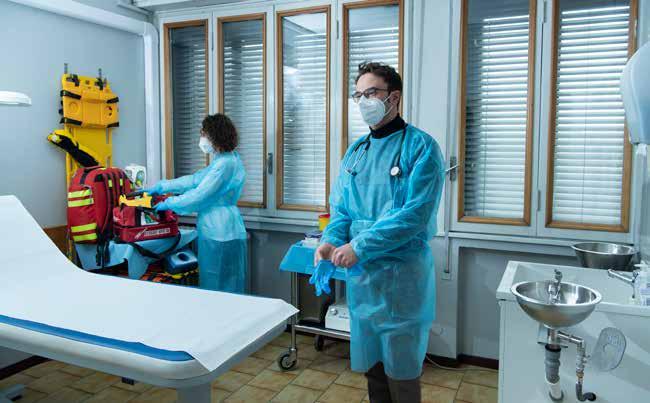
4.7 Safety training
GRI 403-5
The Group feels that disseminating a culture of safety in all its locations and production facilities is of the utmost importance.
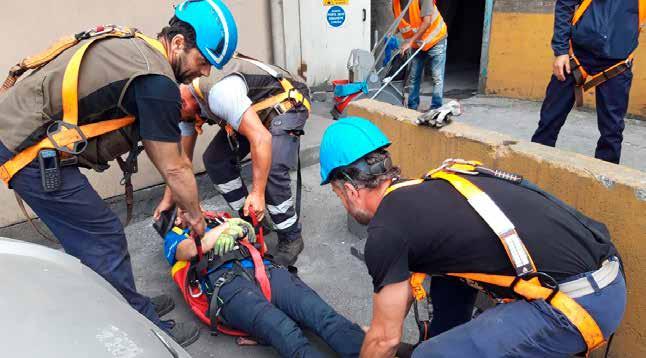
The Group companies are strongly committed to disseminating an appropriate health and safety culture in the workplace in order to avoid (or at least minimise) any risk to health or physical safety and optimise working conditions by choosing suitable equipment and working methods.
Accordingly, staff training plays a decisive and invaluable role and, right at the beginning of each year, all Alfa Acciai Group companies usually plan their training activities by defining the Training Plan to be implemented during the year and any updates, as required. The main courses held are:
▶ Safety training for all workers (general and specific, according to the Central-Regional Government agreement);
▶ Managers;
▶ Supervisors;
▶ Fire-fighting;
▶ First aid;
▶ Use of equipment (forklift trucks, cranes, elevating platforms);
▶ Category III PPE. The courses are held in-house and generally by accredit-
ed training schools and/or freelance technical teachers. In addition, ad hoc training courses and meetings are held for workers following the review of operating procedures and instructions, while newly-hired employees or ones who have changed their position are followed by experienced workers (tutors) who assess their learning and final performance skills.

4.8 Injuries
Thanks to prevention measures implemented by the companies in the Alfa Acciai Group, in 2022 there was a reduction in industrial accidents involving employees and external workers. More specifically, by the end of the financial year, the Group had recorded a total of 49 industrial accidents involving its employees, with an accident rate equivalent to 26.08 against 81 accidents and a rate of 40.71 in 2021, and 62 accidents and a rate of 36.02 in 2020.
It should also be noted that in 2022 the number of hours worked by the Group's employees decreased by 100,000 hours, and the hours worked by temporary staff halved overall, which was not however followed by a reduction in accidents.
The reason is due to the increase in the number of temporary workers at Alfa Acciai, who were involved in half of the total number of accidents recorded by the Group. In general, the measures aimed at preventing these events are linked to strengthening process automation and operator training on accident prevention.
For Alfa Acciai the declining trend is among the best in the last 10 years. No significant changes were recorded for Acciaierie di Sicilia and Ferroberica, while at Tecnofil the positive trend continues as a result of ongoing work to raise awareness.
4.9 Engaging with local communities

The Alfa Acciai Group feels that it is essential for local communities to view the presence of the Group companies as a benefit and opportunity in terms of employment and economic and social development.
With its major industrial facilities, the Alfa Acciai Group has a significant presence in the areas in which it operates. As a result, engagement with local communities has always been essential for developing enduring relationships of trust.
This enables communities to get to know the world of Alfa Acciai and understand the organisation and how it operates, while creating value for these communities wherever possible.
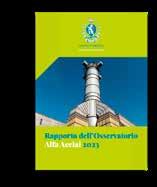
ALFA ACCIAI OBSERVATORY
The main tool implemented by Alfa Acciai to monitor the local socio-economic context is the Alfa Acciai Observatory, which is described in chapter 1, managed by the councillor for the environment at Brescia Council, with contributions from districts and environmental associations. This was established in 2007 and has enabled the company to open up to the community, facilitating transparent dialogue and gathering a diverse range of requests, in relation to external environmental impact generated by production operations, and in terms of the contributions the company can make through its organisation and means. The most recent version of the Alfa Acciai Observatory Report was published in April 2023, following on from the previous 2021 version, while the first report dates back to 2010. These documents can be consulted at www.alfaacciai.it and on the specific webpage for the Alfa Acciai Observatory on the Brescia Council website (www.comune.brescia.it). As well as outlining the initiatives stated in the area, the report also focuses on initiatives to contain CO2 and tackle climate change. In general, the document contains data that is organised, commented and immediately readable, and which uses effective disclosure mechanisms and considers the questions and/or concerns most frequently raised by the public and stakeholders. In light of this ongoing engagement with the community other initiatives have been set up and useful ideas developed for the reference communities.
In light of this ongoing engagement with the community other initiatives have been set up and useful ideas developed for the reference communities. In sharing a vision of culture as a catalyst for change, in 2022 Alfa Acciai continued its collaboration with Fondazione Soldano, which has had a major cultural role in Brescia for more than 20 years, with tertiary sector projects scaled to a national level. In particular, as part of looking after the community and future generations, Alfa
Acciai has supported this organisation and Father Marco Mori, the San Polo parish priest managing the Italian forum of oratories, which together planned and created the S. Polo project entitled Camp Now! From Me to We This is a three-year project for adolescents from various parishes in different Italian outskirts who, using the tools of art and culture, are inspired to self-reflect, think about their future and the contribution that everyone can make to society. It offers a unique opportunity in Italy

for young people who are growing up in disadvantaged circumstances.
A focus on education and sport as an effective way of handling the challenges posed by the socio-economic development of the community is the motivation behind the support Alfa Acciai has provided for local teams for years, such as the football team, Le Rondinelle, and the rugby team, Rugby Brescia. In 2022 Alfa Acciai was part of the project entitled Rugby e Scuola, Insieme Si Cresce (Rugby and School, Growing together) involving 8000 pupils between the ages of 6 and 18 from schools in the Brescia area, which aimed to counteract a lack of sporting participation through an integrated educational pathway. Rugby was offered not just as a sport, but also as a vehicle of values full of highly educational features as it brings people together, and the element of support is the
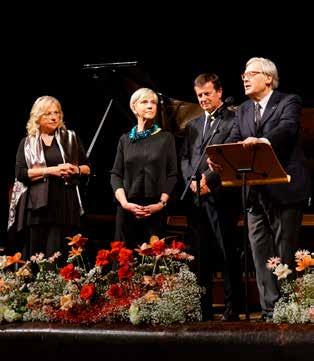
condition sine qua non for achieving success. This is the spirit which drives everyone in the Alfa Acciai Group. Apart from the pleasure of seeing the great result with the senior team at the top of the league in the 2022/2023 championship, the main satisfaction is that even just by the end of the first year of the project, a reduction in inequality in and outside of schools has been recorded.

In tribute to Brescia and Bergamo being named the Italian Capital of Culture 2023, Alfa Acciai is supporting the 60th edition of Festival Pianistico Internazionale Brescia Bergamo, with the season opening in April 2023 with the La Scala orchestra directed by the maestro Riccardo Chilly, who returned to Brescia's Teatro Grande after many years.
Further initiatives range from specific projects, such as actions in neighbouring areas or support for war zones, to more far-reaching ones, such as heat recovery to heat the city of Brescia, as detailed in Chapter 3.
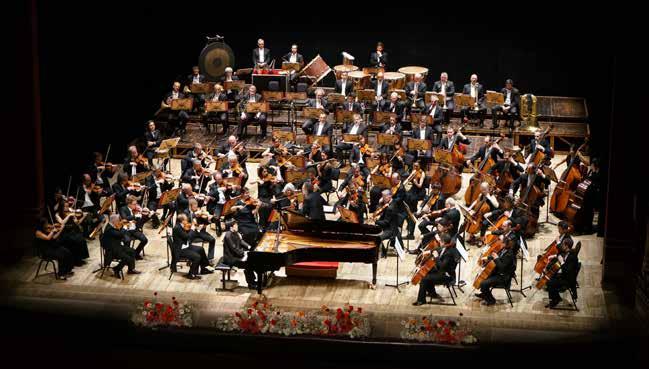
4.10 Sustainable development goals by 2030
8.8

11 – Sustainable cities and communities

Protect labour rights and promote safe and secure working environments for all workers, including migrant workers, in particular women and those in precarious employment.
Target 11.4
▶ Bolster efforts to protect and safeguard worldwide natural and cultural heritage.
▶ The Group is committed to safeguarding the health and safety of its employees by providing safe, secure and healthy working environments. Furthermore, the Group companies have implemented and certified the OH&S management system to UNI EN ISO 45001. Given the type of business, Ferroberica has not certified its OH&S management system.
▶ Collaboration with Fondazione Soldano and Father Marco Mori to support the project entitled Camp now! From Me to We. This is a three-year project for teenagers from various parishes in different Italian outskirts, who, using the tools of art and culture, are inspired to self-reflect, think about their future and the contribution that everyone can make to society.
▶ Support for the 60th edition of Festival Pianistico Internazionale Brescia Bergamo.
Group photo at the 2022 edition of 'From Me to We'
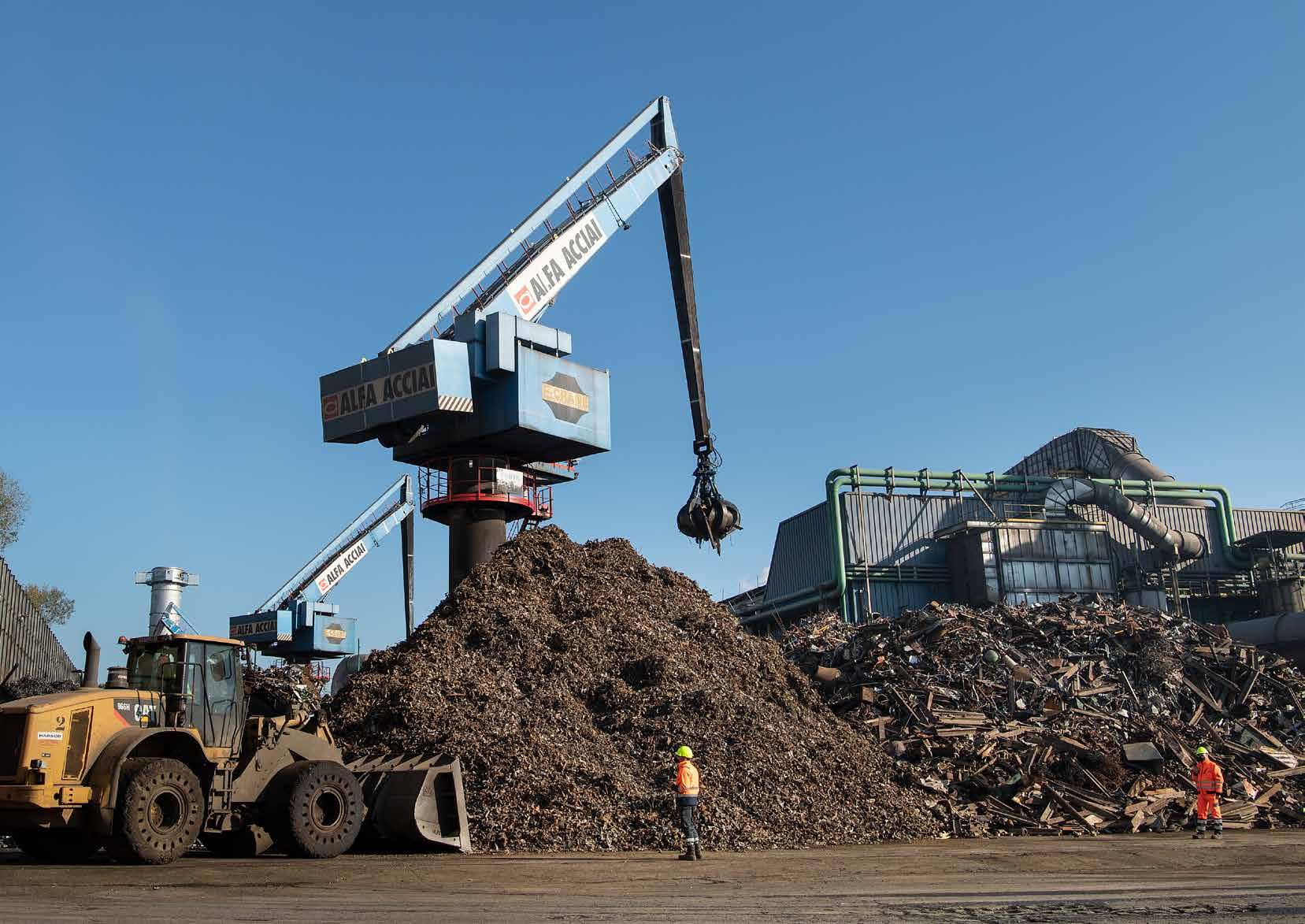
QUALITY SYSTEM: FROM SUPPLIER TO CUSTOMER
Quality System: from supplier to customer

All companies in the Alfa Acciai Group have an integrated quality, environmental and safety system to ensure the maximum product quality, reliability and competitiveness for all stakeholders, safeguard occupational health and safety, and respect the environment.
In line with the Group's highly vertical approach, the supply chain is involved at various levels in quality systems to optimise supply operations, ensure the repeatability of our processes, and guarantee customer satisfaction, commencing with the knowledge and expertise of our collaborators through to the planning, monitoring and ongoing improvement of processes.
5.1 Relationships with suppliers
GRI
All companies in the Group are aware of the strategic importance of their supply chain, therefore selecting stable, reliable and ethically responsible partners is deemed crucial.
In line with the principles defined in the Code of Ethics, including operating with the utmost professionalism and competence plus fully meeting legislative requirements, when managing relationships with suppliers the Group companies are not permitted to have contact with parties implicated in activities which are illegal or do not meet requirements of professionalism and reliability, or to establish relationships with third parties carrying out activities that are detrimental to the environment, health and
human rights. For example, Ferroberica works with numerous companies to provide manufacturing, assembly, installation and haulage operations, and only uses suppliers registered in the White List held by the relevant authorities. Furthermore, the genuine nature of works contracts relating to companies that regularly work with Ferroberica has been endorsed by the Certification Commission in the Marco Biagi Department of Economics (University of Modena and Reggio Emilia).
Particular focus must be put on the quality of goods and services provided and how they are implemented. Therefore, suppliers are selected by the Group on the basis of their competitiveness, considering factors such as quality, innovation, market reputation and environmental protection policies:
With a supply chain that is structured in a consistent way, the Alfa Acciai group's various suppliers are grouped into two macro categories:
Suppliers of goods Suppliers of services
• Suppliers of scrap and other raw materials;
• Suppliers of technology and materials.
• Outsourcer (suppliers performing part of the process);
• Contractors (suppliers providing on-site installation works, ordinary and extraordinary maintenance, tenders and construction sites);
• Suppliers of other services.
In order to achieve set strategic objectives, the Group applies specific policies and procedures when selecting and assessing suppliers, to identify those who are the most reliable.
Illustrated below are the two separate supplier selection and assessment procedures used by the Group - one for ferrous scrap suppliers and the other for suppliers of other goods and services.
5.2 Selecting suppliers of goods and services
The Quality Department and the Procurement Department each with their own responsibilities in handling the procedure for selecting the suppliers of goods and services.
As part of the internal management system, the qualification process involves the option of sending suppliers a questionnaire to verify their compliance with quality standards, and to plan checks where necessary to ascertain the ability of suppliers to meet product and/or system requirements, in addition to understanding any particular aspects of their organisation. With regard to a supplier's initial assessment, different checks are carried out depending on whether or not there is a quality system certified by an officially recognised accreditation body. If suppliers pass the supplier qualification stage they are approved and added to the Vendor List.
Approval is valid for two years, and during this time their performance is continually monitored before and after use to establish and assess the supplier over time.

5.3 Selecting scrap suppliers
GRI 308-1
Given the specific nature of scrap, the selection of suppliers follows a detailed in-house procedure. Everything is done digitally through a dedicated web portal accessible and editable by the suppliers themselves, where the docu-
mentation is prepared and subsequently examined by the relevant departments. Supplier qualification involves an assessment of compliance with reference legislation and factors regarding the environment.
INITIAL INSPECTION
Information is gathered and the equipment used for radiometric testing is checked, as is the type of equipment used in the production unit and the quality of the material on site.
COMPILATION OF CHECK-LIST
If the inspection is satisfactory, an initial check-list is completed with the information gathered at the supplier's premises.
GATHER AND SEND INFORMATION
Documentation required for the authorisation process is gathered and sent to the relevant departments.
SUPPLIER QUALIFICATION
Once the information obtained has been checked and approved by the relevant departments the supplier is qualified and added to the Vendor List.
DOCUMENTATION ARCHIVE
The documentation gathered is electronically archived and updated regularly by the relevant departments.
As was the case for suppliers qualified in previous years, all the new scrap suppliers of Alfa Acciai and Acciaierie di Sicilia, namely 34 domestic and foreign suppliers in 2022, were assessed in terms of environmental criteria and financial soundness, in accordance with the Qualification procedure.
Maintaining the qualification of scrap suppliers and subcontractors of the Group presupposes:
▶ the continued fulfilment of the requirements for their initial qualification;
▶ compliance of the scrap delivered with the requirements for its acceptance, in accordance with the applicable regulations.
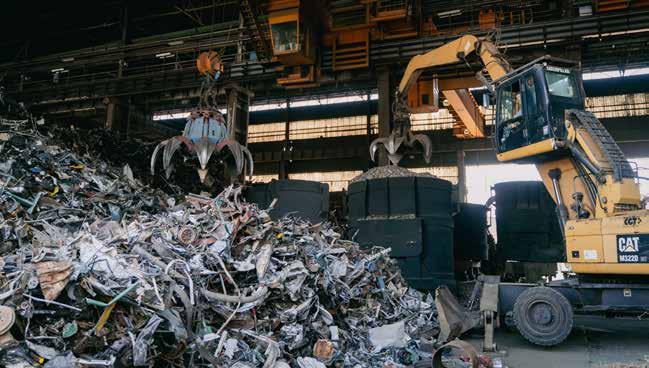
5.4 Spending on local suppliers
Ever attentive to the communities in which it operates, when selecting its suppliers, the Group is committed to enhancing the value of players located in the vicinity of the production units by seeking out and selecting, where possible, local suppliers with the aim of further contributing to the socio-economic development of the area. More specifically, all suppliers are considered 'local' if they are based in the same province in which the operations of the various Group companies are established: namely Brescia for Alfa Acciai, Tecnofil and Alfa Derivati, Catania for Acciaierie di Sicilia, and Vicenza for Ferroberica. Overall, the percentage of expenditure with local suppliers at Group level is 17%, which is slightly down on the 23% of the previous year. In particular Acciaierie di Sicilia has a highly supplier ratio of 45% in 2022.
GRI 2-6; GRI 204-1
5.5 Product quality. Organisational structure
To maximise customer satisfaction, we aim to be a reference point in the electric-arc steelmaking industry, in terms of the quality of our products, the efficiency of our production process and satisfaction with our technical support service.
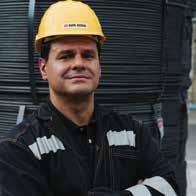
Quality is one of the key factors in establishing precise and rigorous standards in production processes in order to obtain a compliant product.
This commitment is demonstrated by defining specific roles to oversee this topic, including a Group Quality Manager, different Quality Managers for each production unit, or each operational business, a manager for Product Certification and the Quality Management System, a Technical Customer Support Manager and a Central Metallurgic Laboratory Manager.
The employees responsible for overseeing these areas continually work together and with the departments in their own unit or company to quickly resolve issues that
transpire, analyse quality KPIs, and facilitate the flow of information and progress of operations relating to the product, process or systems.
This is within the scope of responsibilities of each Area Quality Manager, overseen by the Group Quality Manager, who coordinates all actions aimed at continually improving Method, Process and Product.
Furthermore, the role of the Business Quality Organisation, for which the Group Manager is the coordinator, is to achieve maximum customer satisfaction by involving every employee in the ongoing improvement process, through specific training activities and on-the-job training.
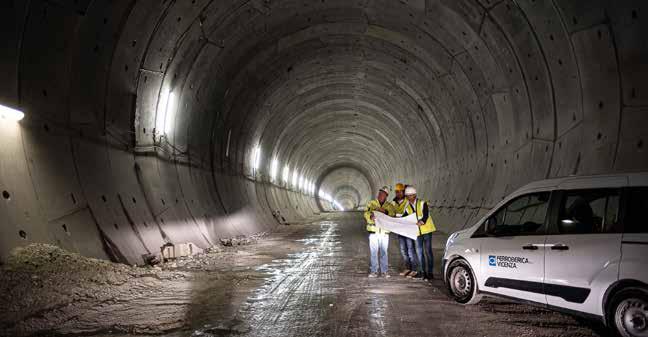
5.6 Quality Management System (ISO 9001)
Underpinning the importance attached to the quality, the Alfa Acciai Group has adopted a Quality Management System complying with UNI EN ISO 9001:2015 and certified by IGQ - Italian Institute for Quality Assurance - and by IQNet - International Certification Networkwhich guarantees operation in accordance with clear operating procedures and instructions that are constantly updated to the company's technical and organisational development, covering all operations: from the acceptance of incoming materials to process and finished product inspection and testing.
Striving to be a benchmark in the EAF steel market in terms of efficiency and quality in the production process for customer satisfaction, the Group has developed a quality system based on the following pillars:
▶ Continuous improvement based on scientific method, adopting KPI (Key Performance Indicators) metrics;
▶ Application of LEAN Production principles, in order to streamline the production process by reducing it only to the phases that create added value;
▶ Painstaking attention to detail, for the achievement of objectives and continuous improvement, while trying to keep the logic of maximum cost efficiency in relation to the quality requirements expected by the target customers.
▶ Involvement of all people at all levels, by defining roles and responsibilities;
▶ Active participation in the Steering Committee of UNISIDER (Italian steel unification body), for the drafting and development of technical standards both at national and European level;
▶ Thinking and acting fast to be always one step ahead.

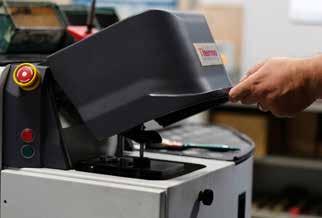

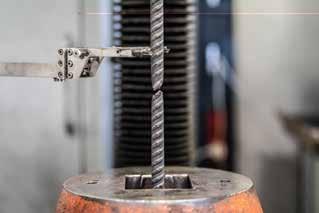
Stefano Bardella Quality Manager - Alfa Acciai Group
GRI 416-2; GRI 417-2
As a whole, the quality level of the Group's products, recognized both nationally and internationally, is guaranteed by the following factors:
• A system of Statistical Process Controls designed to avoid the possibility of committing errors, whereby specific checks and related recording are made at each crucial stage of the process;
5.7 Investing in quality
Over the years the Alfa Acciai Group has devoted considerable resources to improving the quality of its products, through dedicated research and development activities as well as heavy investment in equipment, digitalisation and personnel training.
production plants with IT systems and automatically access data.
For this purpose, major investments were approved in 2022 to expand the company's ability to characterise the mechanical properties of its products. This involved the purchase of a new tensile testing machine and a vibrophore to carry out in-house fatigue testing on ribbed steel for applications in the construction industry, as stipulated in various international standards. PROCESS CONTROLS
CUTTING-EDGE TECHNOLOGY
• Incoming strategic material is sample tested according to statistical sampling methods using state-of-the-art analysis equipment and techniques, including XRF (X-ray Fluorescence spectrometry), IR (infra-red) combustion analysis and laboratory and portable instruments.
With a view to correctly managing the entire production cycle, enhancing product quality and end-customer satisfaction, the Group has decided to invest heavily in process digitisation and Industry 4.0 in order to interface
TECHNICAL ANALYSES
• Our test labs feature cutting-edge instruments and the finished product is mechanically tested by highly skilled technicians, using modern machines to ensure compliance with mandatory standards and customer requirements;
• Ongoing investments to adopt the best technological solutions available in the electromechanical and steel sectors.
• The chemical composition of each of our products is assured by Direct Optical Spectrometry (quantometer) and C-S (carbon-sulphur) and O-N (oxygen-nitrogen) analysers;
• Micrographic analysis of the produced steel by means of optical microscopy;
• The metallurgical laboratory, which is equipped with a latest technology microscope, can analyse the steel phases, the inclusional grade and the crystalline grain size automatically, as well as perform a Failure Analysis for customers.
In addition to the inspections envisaged for system certification, the effectiveness of the management systems in place is guaranteed by the numerous control procedures carried out both in-house and outside. During 2022, in Alfa Acciai alone, a total of 816 hours of inspections were carried out, including external system audits, external product audits, audits for the Sinstone® CE mark and internal audits. Furthermore, Group companies are
also continually subjected to audits by national certifying bodies for the marketing of reinforcing steel.
As a result of the continued focus on quality and monitoring of production processes, in the last three years the Alfa Acciai Group has neither reported any noncompliance cases regarding the impact of the products sold on health and safety nor any non-conformities regarding the information and labelling of products and services.

5.8 Partnerships in favour of quality
In addition to the extensive digitalisation process that involved the entire Alfa Acciai site, which was implemented in collaboration with Milan Polytechnic University, below is a list of other current ongoing activities and collaborations relevant to the Group:
5.9
Customer satisfaction
The Alfa Acciai Group has been able to proactively experience the context in which it operates, anticipating and interpreting the megatrends that have affected the world of steelmaking over the years. A holistic view of business management always starts from its focal point - the Customer.
The overall corporate strategy is based on two key factors:
▶ Analysis of customer satisfaction;
▶ Management of complaints.
With the aim of achieving maximum efficiency upstream the melting process and improving the quality of the ferrous scrap used, Alfa Acciai has chosen Harsco Metals as its strategic partner. This US-based multinational is a global leader in the supply of innovative technologies and services to steel manufacturers in their processing operations, logistics and recovery of metals from process waste.
From the outset, the agreement contributed significantly to the digitalisation of the steel mill and scrap yards through this partner’s expertise, and the collaboration is progressing successfully, resulting in the ongoing improvement in managing furnace charge and slag optimisation.
Throughout 2022, activities continued on the collaboration with Danieli (Alfa Acciai’s historical partner) that started up in 2020 and is aimed at improving the production process of semi-finished and finished products, enhancing the company’s know-how and the major plant-engineering work on the Wire Rod Rolling Mill, which is scheduled for completion by the end of 2023, with the introduction of a new second level automation system. With the Danieli Group's strong technological backup, it was possible to pursue planned activities to improve the production and quality performance of plants as well as the economic and environmental performance of both plants and production processes.
The fruitful partnership between the Alfa Acciai Group and Brescia University continues, and over time this has made it possible to achieve improvement and efficiency targets related to production performance, using statistical techniques designed to manage vast amounts of data. This collaboration is especially active in the investigation and optimisation of chemical-metallurgical aspects that affect the fatigue lifetime performance of the finished product for reinforced concrete. Also significant is the technical-scientific contribution from collaboration on projects regarding particular study activities and failure analysis.
On the first point, the degree of customer satisfaction is determined, understood and satisfied on a regular basis, using different types of monitoring activities, such as satisfaction questionnaires, marketing visits, technical site surveys and consulting services for the development of dedicated products and business activities.
More specifically, in 2021 the Group launched a stakeholder engagement activity addressed to its customers in view of the planned update of the materiality analysis on sustainability topics carried out in the previous Sustainability Report, which didn’t eventually change from what was expected. As part of this activity, the Group asked its customers specific evaluations on other environmental issues, such as the environmental product and system certifications granted, which met with a general appreciation. Last but not least, the plan also included
sections dedicated to surveying the customer’s degree of satisfaction regarding the various features characterising a business relationship, such as product quality, order management and after-sales service, the communication level, the staff's readiness and expertise, as well as the perceived priorities within the business relationship. In this regard, the Group has set up an easy yet detailed online questionnaire, translated into several languages, which, starting from a common matrix sent out by all group companies at the same time, was adapted in each case to the specificities of the supplier companies. The results of the questionnaires, wherever a courtesy response was received, enabled the Group to precisely understand the generally very high customer satisfaction level, even in relation to competitors, and to take targeted action, wherever discrepancies between expected and promised quality were found.
The second point is crucial as it is necessary to react promptly to address a problem and accordingly take immediate steps on the process or product to avoid the recurrence of the same situation. The Group believes that only in this way can the real needs of customers be best interpreted, and then be able to design and manufacture a product that closely meets what is expected in terms of guaranteed performance and repeatability.
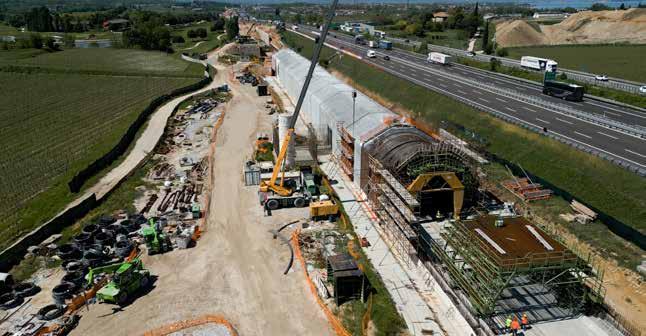
Brescia University
Danieli
Harsco Metal
Ferroberica ’s construction yard - The artificial tunnel for the Bresca-Verona High-Speed train line in Peschiera del Garda (VR)
This effort has a twofold advantage:
▶ not overlooking issues that could damage the company's business, rather seeking to prevent and solve them;
▶ learn from experience by trying to ‘make it our own’ and enhance the KAIZEN process.
Furthermore, Alfa Acciai can share experiences from within the Group with customers, by capitalising on the verticalisation process with its subsidiaries. The experience gained from the use of our products within the Group within Alfa Derivati, Ferroberica and Tecnofil, which process products marketed by Alfa
Acciai and Acciaierie di Sicilia, become opportunities for continuous improvement. Any critical issues are addressed and resolved very quickly, thus ensuring the best customer service. Even the development and application of new products are accomplished very quickly. Sharing this knowledge with customers is crucial: our aim is to be viewed as reliable partners committed to a process of common growth, and not just as mere suppliers. This is how the Group can manage to combine the right mix of continuity and innovation that has always featured in its history.
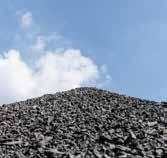
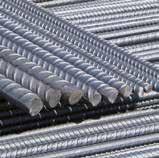
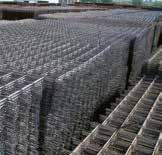

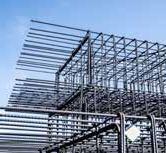
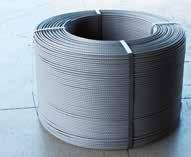
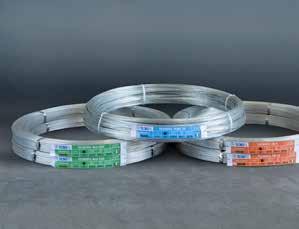

and men, including for young people and persons with disabilities, and equal pay for work of equal value.
In managing relations with their suppliers, Group companies always refer to the principles defined in the Code of Ethics, including: utmost proficiency and expertise , as well as maximum regulatory compliance. Furthermore, the Group is committed to selecting its suppliers also on the basis of their competitiveness, taking into account elements such as quality,
market reputation, and
policies
GRI Content Index
5.10 Sustainable Development Goals by 2030
Independent Auditors’ Report
GRI 2-5

Independent Auditor’s Report on the Sustainability Report 2022
To the Board of Directors of Alfa Acciai SpA
We have been engaged to undertake a limited assurance engagement on the Sustainability Report of Alfa Acciai Group (Alfa Acciai SpA and the companies Acciaierie di Sicilia SpA, Tecnofil SpA, Ferro Berica Srl and Alfa Derivati Srl are considered together, for the purposes of this Report, hereinafter the “Group” or “Alfa Acciai Group”) for the year ended 31 December 2022
Responsibilities of the Directors for the Sustainability Report
The Directors of Alfa Acciai SpA are responsible for the preparation of the Sustainability Report in accordance with the “Global Reporting Initiative Sustainability Reporting Standards” issued in 2016 and updated in 2021 by GRI - Global Reporting Initiative (the “GRI Standards”) updated in 2021 as illustrated in the “Methodological note” section of the Sustainability Report.
The Directors are also responsible for the internal control determined to be necessary to enable the drafting of a Sustainability Report that is free from material misstatements due to fraud or nonintentional events and behaviours
The Directors are also responsible for defining the sustainability performance targets of Alfa Acciai Group, as well as for identifying its stakeholders and material topics to be reported on.
Auditor’s Independence and Quality Control
We have complied with the independence and other ethical requirements of the Code of Ethics for Professional Accountants issued by the International Ethics Standards Board for Accountants, which is founded on fundamental principles of integrity, objectivity, professional competence and due care, confidentiality and professional behaviour.
Our firm applies International Standard on Quality Management 1 (ISQM 1) and accordingly maintains a comprehensive system of quality control including documented policies and procedures regarding compliance with ethical requirements, professional standards and applicable legal and regulatory requirements.


Auditor’s Responsibilities
Our responsibility is to express a conclusion, based on the procedures performed, on whether the Sustainability Report complies with the requirements of the GRI Standards. We conducted our work in accordance with “International Standard on Assurance Engagements ISAE 3000 (Revised)Assurance Engagements other than Audits or Reviews of Historical Information” (hereinafter also “ISAE 3000 Revised”) issued by the International Auditing and Assurance Standards Board (IAASB) for limited assurance engagements. That standard requires that we plan and perform procedures to obtain limited assurance about whether the Sustainability Report is free from material misstatement.
The work performed was less in scope than in a reasonable assurance engagement conducted in accordance with ISAE 3000 Revised and, therefore, does not provide us with a sufficient level of assurance that we have become aware of all significant facts and circumstances that might be identified in a reasonable assurance engagement
The procedures performed on the Sustainability Report were based on our professional judgement and included inquiries, primarily of personnel of the Company responsible for the preparation of the information presented in the Sustainability Report, inspection of documents, recalculations and other procedures designed to obtain evidence considered useful.
In detail, we performed the following procedures:
1. analysis of the process of definition of the material topics reported on in the Sustainability Report, with reference to the methods of analysis and understanding of the organization’s context, identification, assessment and prioritization of actual and potential impacts and to the internal validation of the results of the process;
2. understanding of the processes underlying the generation, collection and management of significant qualitative and quantitative information included in the Sustainability Report.
In detail, we inquired of and discussed with management personnel of Alfa Acciai SpA and we carried out limited analyses of documentary evidence, in order to obtain information about the processes and procedures supporting the collection, aggregation, processing and submission of non-financial information to the corporate function in charge of the preparation of the Sustainability Report.
Furthermore, for significant information, taking into account the activities and characteristics of the Group:
- at parent company level
a) with reference to the qualitative information presented in the Sustainability Report, we carried out interviews and obtained supporting documents to verify its consistency with available evidence;
b) with reference to quantitative information, we performed both analytical procedures and limited tests to verify, on a sample basis, the accuracy of data aggregation

- for the following companies Acciaierie di Sicilia SpA, Tecnofil SpA, Ferro Berica Srl and Alfa Derivati Srl, selected on the basis of their activity, their contribution to aggregated performance indicators and their location, we obtained documentary evidence, on a sample basis, about the correct application of the procedures and calculation methods applied for the indicators.
Conclusion
Based on the work performed, nothing has come to our attention that causes us to believe that the Sustainability Report of Alfa Acciai Group for the year ended 31 December 2022 is not prepared, in all material aspects, with reference to the requirements of the GRI Standards as illustrated in the “Methodological note” section of the Sustainability Report.
Brescia, 15 September 2023
PricewaterhouseCoopers Business Services Srl
Signed by Paolo Bersani (Partner)
This report has been translated from the Italian original solely for the convenience of international readers. We have not performed any controls on the Sustainability Report 2022 translation.
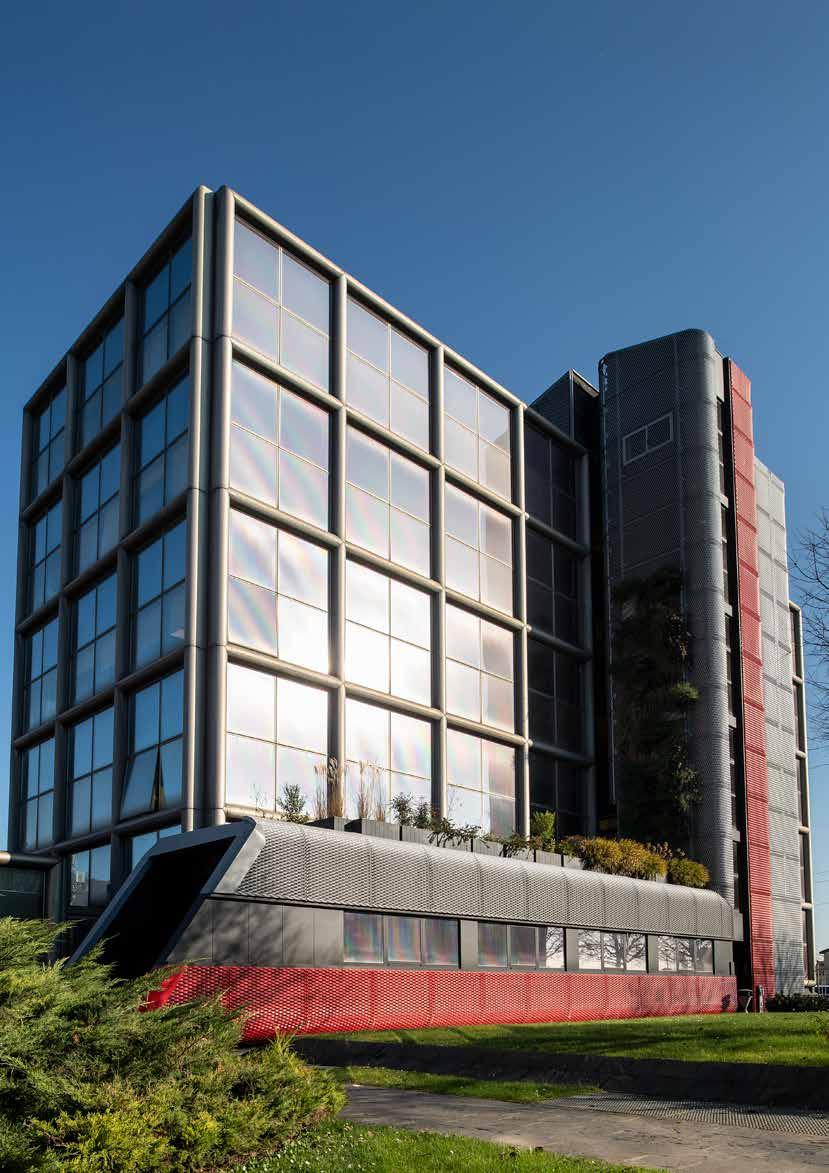
www.alfaacciai.it
ALFA ACCIAI SpA
ALFA DERIVATI Srl Via San Polo, 152 25134 Brescia (BS) - Italy
Ph. +39 030.23911 info@alfaacciai.it
ACCIAIERIE DI SICILIA SpA
Stradale Passo Cavaliere, 1/a 95121 Catania (CT) - Italy
Ph. +39 095.7487811 info@acciaieriedisicilia.it
FERRO BERICA Srl
Via Dell’Edilizia, 22 36100 Vicenza (VI) - Italy
Ph. +39 0444.391500 info@ferroberica.it
TECNOFIL SpA Via Brescia, 49 25023 Gottolengo (BS) - Italy
Ph. +39 030.9517655 info@tecnofil.net
For more information on Sustainability Reporting, log on to infobds@alfaacciai.it
© 2023 Alfa Acciai. All rights reserved.
Concept and graphic design: Studio Baronio (BS) Printed in September 2023 on Shiro Echo 100% recycled, biodegradable, eco-friendly paper.


